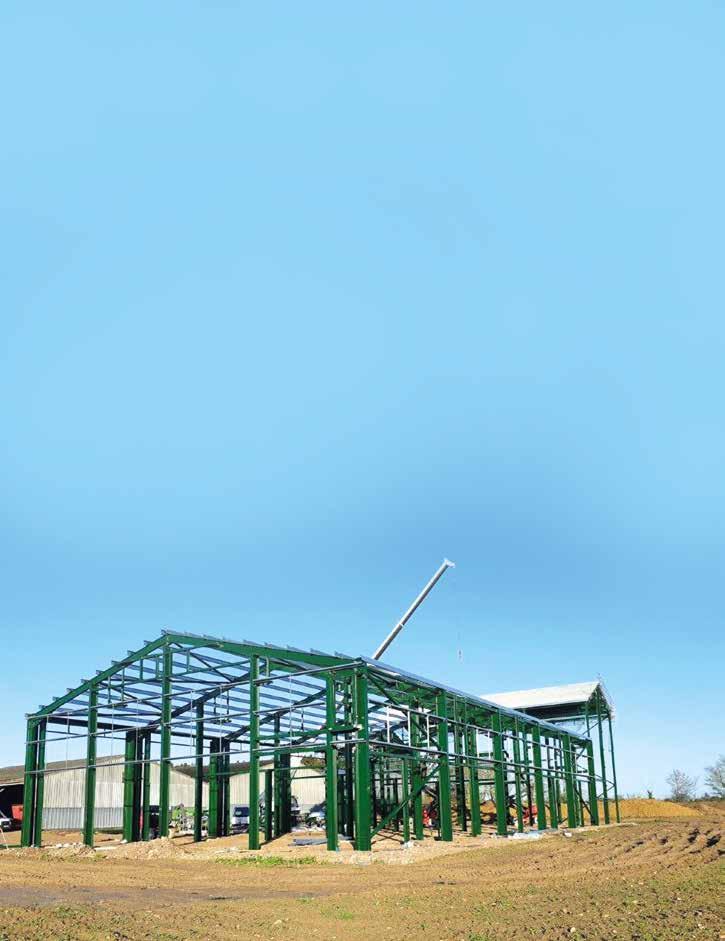




Noventum Power Limited is one of the leading large-scale renewable energy companies in the UK







Noventum Power Limited is one of the leading large-scale renewable energy companies in the UK

We will work with you, helping you towards developing your land into an income generating asset that can provide additional income streams for your business.
The benefits include:
•Diversifying revenue streams away from farming or other land uses
•Deploying solar power or wind turbines on your available land

•Maintaining agricultural use through sheep grazing when possible
We are looking for sites between 50 acres and 200 acres, ideally close to a nearby grid connection
Land should be relatively flat and Grade 3 or lower
Well screened by hedges and a good distance from residential property
Not in a valued landscape or near historic buildings
We have a team of experienced, highly proficient renewable energy experts. They have an extensive record which encompasses the following:
Land Acquisition
Investment
Construction
Energy Storage
Planning and Permitting Grid Solutions
Power Engineering & Grid Connections
Operation and Maintenance
If you would like to discuss how to potentially earn a secure and long-term predictable income stream from your land, please get in touch and contact us on:
89562
EDITORIAL
Editor:
Johann Tasker | T: 07967 634971
E: johann@ruralcity.co.uk
Design:
Mark Shreeve | T: 01502 725839
E: mark.shreeve@micropress.co.uk

Advertisement production:
Jade Soanes | T: 01502 725840
E: jade.soanes@micropress.co.uk
ADVERTISING SALES
Chloe Miller | T: 01502 725844
E: chloe.miller@micropress.co.uk
Daniel Rice | T: 01502 725858
E: daniel.rice@micropress.co.uk
Mat Roffey | T: 01502 725854
E: mat.roffey@micropress.co.uk
Mark Tait | T: 01502 725803

E: mark.tait@micropress.co.uk
Anglia Farmer is a controlled circulation magazine published monthly for farmers and growers in the eastern counties. To be included on the circulation list, a farmer must have a minimum of 70 acres of land, or 50 dairy/beef stock, or 50 breeding sows/250 growing stock, or 15,000 laying hens/broiler chickens. Intensive horticulture units are required to have a minimum of two hectares. Subscription is £18 a year (including postage). No responsibility can be accepted by the publishers for the opinions expressed by contributors.
If you no longer wish to receive this magazine, please email your name, address and postcode as it appears on the wrapper to adam.gunton@micropress.co.uk
© Countrywide Publications 2023
Published by Countrywide
Publications, Fountain Way, Reydon Business Park, Reydon Suffolk IP18 6DH
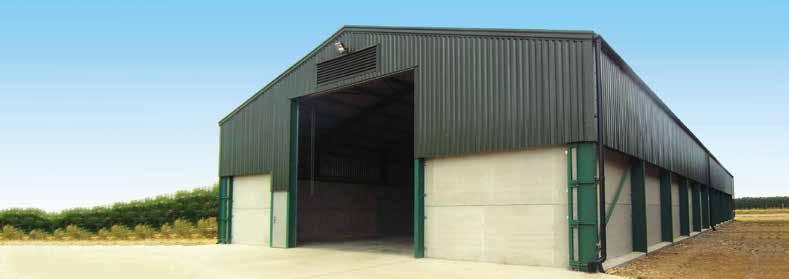
T: 01502 725800
Printed by Micropress Ltd, Suffolk.
T: 01502 725800
Sometimes you wait ages for a reason to join an agri-environment scheme – and then 23 good reasons come along at once. At least that's what the government is hoping.
The 2023 iteration of the Sustainable Farming Incentive (SFI) includes 23 new options for farmers to look after the environment while producing food sustainably.
Launched to much acclaim by Defra farm minister Mark Spencer last month, the government hopes the scheme will prove attractive to those farmers who have so far left it well alone.
About 3,300 farmers signed up to the 2023 SFI. But way more are needed if Defra is to achieve its target of having 70% of farmers in the scheme within the next few years.
On paper, it looks attractive.
Farmers will get paid for taking actions that improve farm productivity and resilience, while also protecting and improving the environment.
Additional actions under SFI 2023 will help ensure there is an offer that is attractive and workable for all types of farms, says Defra.
The 23 actions on offer cover existing themes including soil health and moorland, as well as new actions on hedgerows, integrated pest management,
nutrient management, farmland wildlife, buffer strips, and low input grassland.
When adopted at scale, these actions will support sustainable food production and contribute towards the government's environmental Optimising the use of nutrients, for example, will not only reduce carbon emissions but can also reduce farmers’ costs. But the scheme is less light touch than many thought it would be. Witness the 156-page handbook accompanying the launch.
The NFU rightly says Defra has to get the scheme correct. Applications for SFI 2022 have now closed with Defra promising a “smooth transition” for the 3000 or so farmers who applied.
This process will need to align with the roll out of the SFI 2023 offer. The NFU says these farmers must be treated fairly during the transition, should they wish to take up a 2023 agreement.
If the SFI and the wider environmental land management scheme is to be successful, it must be simple, flexible and provide certainty to secure widespread uptake.
That means farmers must be properly rewarded – otherwise the scheme will fail to meet its goals of benefiting farm businesses and the environment.
Johann Tasker EditorPlans to pay farmers more for looking after the environment have been welcomed – amid warnings that early adopters must not be unfairly penalised.
Improvements to Defra's Sustain able Farming Incentive (SFI) mean farmers who sign up to the scheme this year will have more options to choose from than farmers who joined last year – and more opportunity to boost their income.
Some 23 options on offer cover ex isting themes including soil health and moorland – as well as new actions on hedgerows, integrated pest management, nutrient management, farmland wildlife, buffer strips and low input grassland.
It means farmers could be paid £10 per 100m for managing one side of a hedgerow (plus a further £10 per 100m to maintain or establish hedgerow trees); £129 per hectare for multi-species cover crops; or £589 for a nutrient management review.
Farm minister Mark Spencer said: “After listening to extensive feedback from farmers, we’ve done a huge amount to streamline and improve the Sustainable Farming Incentive, making it as simple and flexible as possible for farmers.”

“We want farmers to be able to access a package that works best for them. The scheme will remain flexible to allow for the changing needs and requirements of farmers and their markets to ensure the best outcomes for food production and the environment.”
The government has also confirmed
the SFI management payment will be applied to all land-based SFI actions, including moorland, and has updated the payment rate for low input grassland action to make the rates the same for upland and lowland areas.
For tenant farmers, there are shorter agreement lengths that do not require landlord consent. This makes payments more accessible to those on short-term agreements, and includes
The 2023 scheme will open to applications from August. Defra says it will contact the 3000 or so farmers who joined the SFI in 2022 to explain how they can access the payments, benefits and improvements in the 2023 offer.
NFU vice president David Exwood praised the improvements. But he added: “Given their early commitment and the lessons learned, these farmers must be treated fairly and rewarded during the transition, should they wish to take up a SFI23 agreement.
“Defra has to get this right. If SFI and the wider Environmental Land Management scheme is to be successful, it needs to be simple, flexible and provide certainty so there’s wide-
Country Land and Business Association president Mark Tufnell said the changes showed Defra was committed to responding to feedback from farmers, helping to ensure the scheme works for as many businesses as possible.
But he said it was a pity that the transition process could not have been smoother for early adopters. He added: “We will press Defra and the Rural Payments Agency to ensure further procedural improvements are made where necessary.”
Farmers face a hike in levy rates to address the impact of rising costs at the Agriculture and Horticulture Developoment Board.
With agriculture facing unprecedented pressures, including inflation and the reduction in the Basic Payment Scheme, services provided to support levy payers are becoming more important than ever, says the AHDB.
Conversations will be held with key industry stakeholders and levy payers during the coming months. A formal consultation will take
place this autumn. If approved, new rates could be implemented from April 2024.
Levy rates have remained broadly the same since 2011. Although the AHDB says it has made significant savings have been made, it warns that rising costs are continuing to add pressure on its budget.
AHDB director Will Jackson said: "There is never a right time to be recommending a levy increase, but we believe the current economic climate makes the case more urgent with clear, tangible benefits.”

For use against flying and crawling insects and stored product insects such as saw-toothed grain beetle, grain weevil, red-rust flour beetle, flour moth and grain mite. For use in empty grain stores, industrial buildings and food handling/storage/manufacturing premises.











Healthy crops. Nourishing soil. Thriving habitats. Now and for future generations. We know what the custodians of our land want – because you’ve told us, through decades of working with you.

Our MOREwoods and MOREhedges schemes offer up to 75% funding for treeplanting projects, and we’ll be there with you to help transform and diversify your business, giving us all a healthier future.





woodlandtrust.org.uk/plant





MOREwoods is funded by


Norfolk farmer Michael Balls welcomed visitors to the launch of the new Norwich Monitor Farm last month – the Crown Point Estate at Kirby Bedon.
Mr Balls, who looks after the diverse arable enterprise south-east of Norwich, joined the estate as farm manager in 2021. He said he was keen to trial some innovative techniques within the farming system and share his experiences with other growers.

The monitor farm programme is a knowledge exchange initiative led by the Agriculture and Horticulture Development Board. It encourages growers and livestock producers to share their successes – and failures – with fellow farmers.
The launch meeting included an in-
troduction to the farm business, including cropping, agronomy and soils. It also saw discussions on machinery, cultivation and establishment techniques – as well as cover crops, stewardship and diversification.
The Crown Point Estate is one of three new farms to join 13 existing AHDB Cereals & Oilseeds Monitor Farms. The others are Hall Farm, Beverley (East Yorkshire); and Manor Farm, Bingham (Nottinghamshire).
Ana Reynolds, head of engagement at AHDB Cereals & Oilseeds, said: “At the heart of the Monitor Farm programme is the demonstration of trials of new cropping or techniques in ‘real farm’ situations.
“While we encourage attendance at all Monitor Farm open days, the launch of new farms is a great time to get involved in the programme, influence the discussions and watch progress first hand.
The pace of change in UK agriculture meant there had never been a better time to get involved, said Ms Reynolds. With each farm hosting regular open meetings, the monitor farm initative included a diverse array of expertise, farm types and systems.
“There really is something for everyone," said Ms Reynolds. As a free programme centred on peer-topeer knowledge exchange, the discussion and independent results can help shape the future of your farm as part of the wider industry.”
With local field data critical to growers’ success, SESVanderHave has strengthened its UK team (pictured) with the addition of Dean Allwood and Courtney Kilham to help farmers get the best from the sugar beet breeder's genetics and seed technology.
“Our extensive trials and research work undertaken in the UK and internationally makes it important to share this knowledge with our growers,” said UK managing director Ian Munnery.
“We want to gain direct feedback on the performance of commercially-grown crops for traits such as drought tolerance, nitrogen use, virus yellows or establishment.
“Dean and Courtney will be familiar and trusted faces to UK beet growers having spent many years with British Sugar. We are pleased to see them join our UK team

to further support growers.
“With a strong portfolio and an exciting pipeline in registration, it is timely to expand our UK team.”






UK: 07957 125741 ROI: 086 172 5630 or email sales@haycap.co.uk www.haycap.co.uk



Payment rates have been agreed for farm-saved seed and the latest list of eligible varieties.
With 2023 spring declarations under way, the British Society of Plant Breeders said it was also publishing advice on blends, cover crops and what farmers should do in the event of a failed crop.
BSPB chief excecutive Sam Brooke said: “Since the launch of our online returns site in 2021, we have seen an encouraging increase in on-line farm saved seed declarations – [but] there is still some confusion around what to declare.
“We wanted to clarify the requirements – especially the need for all protected varieties to be declared regardless of whether they are part of a blend, cover crop or failed crop.”
It is a requirement for all farm saved seed to be produced and sown on the same holding. This prohibits the sharing or sale of seed between growers.
The declaration of any protected variety should be made when the seed is sown.
Ms Brooke said the BSPB was keen to remind growers that yield – and whether the variety is part of a blend or cover crop –does not affect the need to make a declaration.
“Farm saved seed declarations apply to cover crops, volunteer crops, companion crops, whole crops and bi-crops, regardless of yield,” explained Ms Brooke.
“In the case of a failed crop, such as oilseed rape, the seed declaration is still required because payment is due on sowing not harvest. It is illegal to sell, buy, barter or share farm saved seed.”
Where a blend or cover crop that includes a protected variety is sown, the grower must declare the ratio of seed in the blend. This percentage can be used in conjunction with the seeding rate to calculate the payment needed for using the blend.
Hybrid varieties
Growers are also advised not to save seed from hybrid varieties as this will lead to variable offspring, reduced yields, loss of agronomic characters and is against the law.
“It is important that growers remember that all blends, cover and volunteer crops could potentially have a variety that requires them to make a declaration. Saving seed from hybrid varieties is not advised and must be avoided to protect future yields.
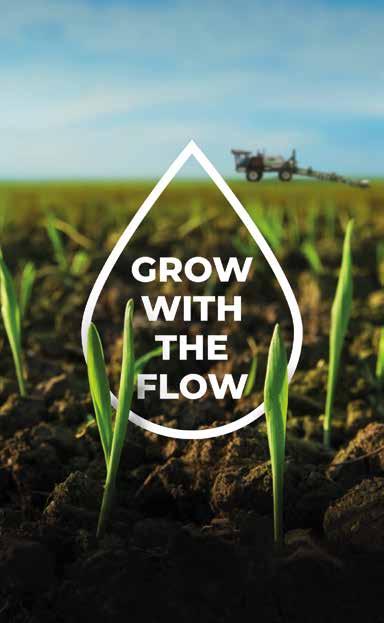
“If there is any uncertainty the BSPB team is on hand to help and offer guidance on how to calculate and declare all varieties of farm saved seed.”
The BSPB says funds raised through farm saved seed declarations help breeders invest in improved varieties better suited to their growing conditions. “By completing your declaration, you are helping plant breeders help you,” it says.
For full details, visit returns.bspb.co.uk

The Agriculture and Horticulture Development Board has published the 50th anniversary edition of the RB209 Nutrient Management Guide.
First published as Reference Bulletin 209 by the Ministry of Agriculture, Fisheries and Food (MAFF) in 1973, the guide was the first comprehensive set of fertiliser recommendations for major crops.
Now published by the AHDB, the latest edition features many improvements, including numerous changes to recommendations for cereals. Hard copies are available and the guide can also be downloaded.
'Notable changes'
AHDB senior environment manager
Amanda Bennett said: “The 50-year edition includes notable changes to the recommendations for oats and key considerations for nitrogen management for milling wheat.”

The AHDB compiles the guide in partnership with many external parties and farmers, who participate in the UK Partnership for Crop Nutrient Management Steering Group and three sector technical working groups. Nitrogen rates for oats, for example, are now based on expected yield.
Alli Grundy, an independent adviser and chair of the RB209 arable technical working group, works with approximately 25 experts to examine data from across the sector to improve the guide – and its usability.
Ms Grundy said: “This backing means growers can be assured that the information is scientifically robust, providing the evidence needed to support decision making on the farm."

Winter Wheat
n Still the UK’s highest yielding Group 1 breadmaking wheat with UKP for export
n Excellent second wheat performance
n Good Septoria resistance (6.1) and Pch1 eyespot resistance
Scan the QR code to find out more
www.kws-uk.com
no-brainer for Group 1 growers!Seed declarations must be made on all eligible varieties regardless of yield and whether the variety makes up part of a blend or cover crop.
NIAB has awarded its 2023 Cereals Cup to winter wheat variety KWS Extase – with the NIAB Variety Cup going to Limagrain's winter wheat Crusoe.
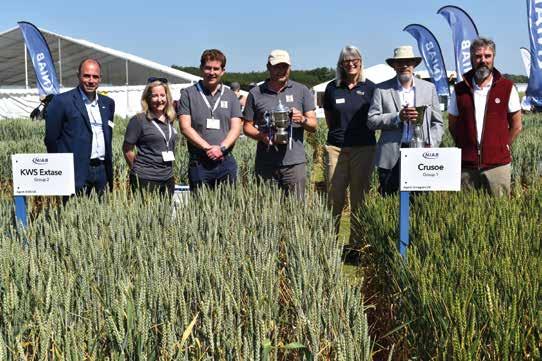
NIAB chief executive Mario Caccamo presented the industry awards at last month's Cereals event to KWS’s William Compson, Kirsty Richards and Mark Dodds; and Limagrain’s Ron Granger and Ian Foot.
Professor Caccamo congratulated both teams of breeders. “It takes a truly exceptional variety to win the NIAB cups in a normal year and we can go for several years without making an award,” he said.
Apart from NIAB's Centenary Award in 2019, it has been eight years since both cups were last awarded. And it’s been 30 years since both cups went to cereal varieties in the same year – when winter barley Puffin and winter wheat Hereward both won in 1993.
“There were a number of strong contenders this year for both cups,” said Professor Caccamo. “The winning varieties KWS Extase and Crusoe are outstanding examples of the strength and diversity of the UK’s plant breeding programmes.”
The Cereals Cup is awarded to varieties that show outstanding merit and value in their marketplace. It can be awarded to relative newcomers to the market, particularly if they represent a step forward for the crop.
It was first awarded in 1953 to the spring barley Proctor. Other past winners have included Einstein winter wheat in 2005, Pearl winter barley (2004), Claire winter wheat (2001) and Skyfall winter wheat (2015).
NIAB cereal crop technical specialist Clare Leaman said KWS Extase was a strong contender for the cup, ultimately winning because it represented a significant advance in winter wheat disease resistance without detriment to yield and quality.
Added to the AHDB Recommended List (RL) in 2019, Extase has also achieved over 14% market share in the past two years, reinforcing its first place for the cup. It was the first variety to combine competitive yield and robust septoria resistance.
ally challenge the accepted wisdom, and spend, of their existing fungicide programmes.”
KWS UK country manager Will Compson described Extase as a significant step forward. With high outright yields, it was the first variety to achieve over 8 for septoria linked to untreated yields of 95% of controls and good Group 2 grain quality.
Many farmers realised they could rely on septoria resistance to boost control at a time when growers were having to rethink their production systems as the number of agrochemicals diminished and environmental demands increased.
Today, KWS Extase remains more relevant than ever, said Mr Compson. “It still has the highest untreated yield on the RL at 97%, and will account for one in seven fields harvested this summer."
List since 2012 and remains popular with growers and end-users alike."
Crusoe is the most likely to achieve a full milling specification and has the most efficient protein production. Although it reached its peak acreage in 2016, its market share in the south of England increased in 2023 – partly due to its yellow rust resistance.
Limagrain UK’s wheat quality manager Ian Foot, said. “It’s a huge honour for those behind the variety, at Limagrain UK and the original Nickerson team. Crusoe’s quality stood out as something special from our very first laboratory assessments.
“It has proven ability to achieve a stable Hagberg, good specific weight, and inherently high protein – and all are a real bonus for growers and end users. Crusoe continues to deliver good baking quality with exceptionally white flour.”
Many growers still see Crusoe as the “gold standard” for bread-making – and the variety has remained robust for more than a decade. Crusoe remaisn popular with farmers for good reason, says Limagrain technical manager Ron Granger, “Agronomically, it has all the characteristics quality wheat growers desire: good onfarm performance, short, stiff straw, proven yellow rust and Septoria resistance, and a secure grain sample.
"Crusoe’s tight glume characteristic protects grain, minimising quality deterioration and sprouting, resulting in it hitting contract specification more than any other Group 1, especially in a wet harvest.
“For plant breeders, Group 1 wheats are tough to crack,” says Mr Granger.
“But a good variety with proven performance, usually rewards by staying in the marketplace longer than any other segment. Crusoe deserves this recognition.”
The winning varieties are outstanding examples



A unique patented new form of phosphorus, for use on all crops.



• Improves the mineral element availability from the soil
• Prevents lock up of phosphorus in all soil pH

• Enhanced soil microbiology


• Stimulated root growth




Early maturing soft wheat Bamford is generating strong support from the trade on the back of promising National List trials.
Bamford has a treated yield of almost 106% supported by an untreated yield of 92%. With a score of 7 for septoria tritici and strong disease resistance to both mildew and yellow rust, it is expected to be included on the 2024 Recommended List.

The high yielding Group 3 winter wheat ticks all the key boxes, says Laura Beaty (right), seed grain director at McCreath Simpson and Prentice (MSP). It has wide marketability with potential to be a key variety in the distilling market, she says
Both yield figures are higher than other varieties in the same class, adds Ms Beaty. “Bamford looks to be one of
the most exciting varieties going forward. It looks robust and should attract growers from all regions within the UK.”
Having seen positive reports on the variety's alcohol yield and residue viscosity conducted by the Scottish Whisky Research Institute, Ms Beaty says she can already see Bamford’s commercial promise for distilling.


“On maturity, Bamford’s +1 rating fits nicely between Skyscraper and many of the other soft wheats that carry a very early +2 score. Its ability to bridge that gap should help larger growers to spread their harvests.
“The next stage will be to await the variety's entry onto the next recommended list before we place it with key

growers to further evaluate its performance more closely in real farm situ ations” says Ms Beaty.
'One to watch'
Andrew Bourne, seeds man ager for independent mer chant T Denne & Sons, has been following Bamford’s progress through Nation al List trials. Bred by UKbased Elsoms Seeds, it has the potential to be a key va riety, he says.
“I specifically re member the trials manager singling it out as ‘one to watch’ and you have to make an important


Bamford challenges the best Group4 winter wheat varieties on yield

mental note in those situations, given that it wasn’t their own variety.
“The 7 for Septoria is a stand-out statistic. But when you look at Bamford’s parentage and realise that it’s a Moulton cross, not a Cougar cross, then the genetic sums begin to add up.
“We still have a lot of growers with KWS Zyatt and RAGT Skyfall. Both are good yielders but with high susceptibility to yellow rust. Bamford’s 7.8 score for yellow rust, combined with its very high yield, could make it a popular choice for the south.

On out-and-out yield, Mr Bourne says Bamford challenges the best Group 4 varieties – and has potential to become another Riband or Consort, two highly successful varieties that came out of the Plant Breeding Institute programme in the 1990s.
“Neither were the most popular varieties because they were Group 3s – but they simply had that perfect combination of high yield, excellent disease resistance and consistency,” says Mr Bourne.
As the most competitive Group 3 variety at this stage in its development, Bamford has the potential to become one of the most competitive and marketable soft wheats available with suitability for biscuit-making, export and distilling.
“With that kind of market flexibility, it certainly looks to be one of the most exciting National List candidate varieties this year,”
Winter Wheat
n Excellent disease resistance including 7.4 for Septoria tritici
n Very high untreated yield
n Short and stiff with early maturity
Scan the QR code to find out more
www.kws-uk.com

The super clean bread maker with harvest security built-in





Celebrating
• New hard Group 4-type variety


• High yielding and quality grain

• Consistent and performs well

Agrovista has pledged to donate 10% of seed sale profits from its new winter wheat variety Mindful to two farming charities.
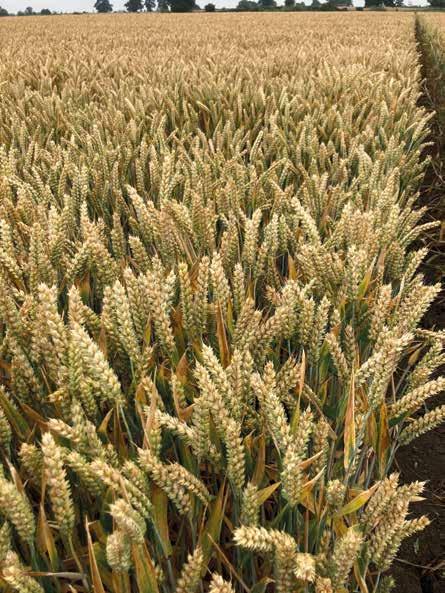
Mindful is a new hard Group 4-type wheat from Agrovista Seed. The variety has achieved high yields of quality grain across a range of sites over different seasons, helping to underpin grower
profits across the country.
Sales of Mindful seed will support the farming community in another way too – building on a partnership forged between Agrovista, the Farming Community Network and Scottish charity RSABI last year.
Agrovista head of marketing Jodie Champion said: “Given the unprecedented challenges the agricultural sector is facing, we wanted to help farmers and their families access the emotional and practical support that both charities provide.

Many farmers face increasing business and personal pressures that could seriously affect mental and physical wellbeing if left unchecked, said Ms Champion
She added: “It is vital that those involved in agriculture and their families have access to a sympathetic person at the end of the phone who understands farmers and rural life.


Giles Western is growing Mindful for the second year in succession on his 400ha arable holding near Woodbridge, Suffolk.
Last season, Mr Western grew 22.5ha of pre-basic Mindful seed. It was drilled on 1 October 2021 at a rate of 125kg/ha into heavy clay loam which had been left fallow after April-lifted sugar beet.
“The crop looked good from the start,” says Mr Western. “It stood very well and remained clean – and it was noticeably earlier to harvest than Dawsum and cut like a dream.”
The crop yielded 12.14t/ha of bold grain, while his Dawsum averaged 11.83t/ha. The 22.5ha field was resown with pre-basic Mindful and a further 35.5ha of C1 seed was grown after oilseed rape and sugar beet – the latter sown on 7 January at 300kg/ha.
“The January-drilled crop looks better than Gleam drilled about the same time and the earlier-drilled Mindful looks very good as well. Based on my experience so far, I’ll keep growing the variety for seed or feed.”
Stuart Cree says Mindful shows high-yield consistency

charities carry out every day. But, more importantly, we hope that by extensively promoting the charity helplines, this may just help one person out when they need it most.”
When it comes to in-field performance, Mindful has shown highyield consistency and topped inhouse trials in two very different years, said Agrovista technical seed specialist Stuart Cree.
“Mindful offers a consistently strong yield performance across differing regions and drilling dates, and after a range of previous cropping and as a second wheat.”
Mindful produced the best mean yield across Agrovista’s AgX trial sites in 2021 and 2022
at both extremes of the sowing window. Drilled last September, it produced 14.89t/ha. A late sown crop drilled in November the same year yielded 15.44t/ha.
Mindful achieved a two-year mean yield of 13.15t/ha at the Agrovista AgX site at Haddenham, Cambridgeshire. The variety combines disease resistance ratings, suggestive of multi-gene protection derived from parents Evolution and Costello.
Trials for harvest 2022 carried out as part of National List trials in Scotland and Cambridgeshire placed Mindful in the top three yielding varieties when sown after peas or cereals pre-ploughed before 25 September, said Mr Cree.



“Evolution delivered a stepchange in disease resistance and high untreated yield, and Costello had total resistance to yellow rust,” he added.
“This resistance is only part of Mindful’s genome, promising similar stability over time.”
The Farming Community
We chose LG Astronomer for its quality, good agronomics and disease resistance.
John, East Yorkshire
• Exceptional All Round Agronomic Security

• Excellent Disease Resistance
• Market Opportunities for Biscuit and Distilling
lgseeds.co.uk/lg-astronomer

LEMKEN supplies perfectly coordinated, innovative technology for high-yield agriculture. From stubble cultivation to ploughing, seedbed preparation, seeding up to CropCare – well thought-out solutions come from one source at LEMKEN.
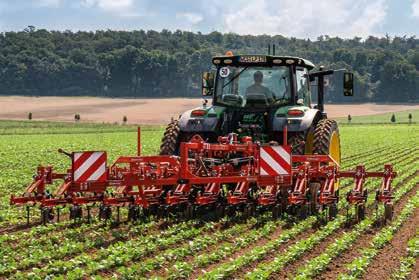


OUR DRIVING FORCE: YOUR SUCCESS!
lemken.com

The benefit of tackling takeall has been highlighted by a seed-treatment trial.
The soil-borne pathogen Gaeumannomyces tritici is ever present in UK arable soils – building to yield-robbing proportions when a second, third or even fourth cereal is grown.
At its most damaging on light, sandy soils, take-all can cause yield losses of up to 50% in winter wheat, with crops increasingly affected as the UK climate warms.

Financial return
This increases the need for protection against the disease where there is risk – and research conducted last year by ADAS reinforces this argument, says Certis Belchim seed treatment specialist Adam Nears.
The fully replicated trial was car-
winter wheat varieties, each treated with a single purpose dressing (SPD), or SPD plus Latitude (silthiofam) seed treatment.
Results showed selecting the right variety can reduce the impact of takeall on the crop, with plant assessments in the SPD-only treatments showing less severe root damage on Palladium than Extase, for example.
At harvest, yield results showed a clear benefit from Latitude – the only fungicide approved for the control of take-all – in all four varieties. Extase produced 1.9t/ha extra with Latitude, Palladium 0.9t/ha, and the average response across all trial varieties was 1.4t/ha.
Financial return
“Our Latitude Cost Benefit Calculator assumes a more modest 0.55t/ha response, taken as a medium risk average from many years’ of trials.
“With treatment costing about £230/t, harvest 2024 wheat futures at £200/t, and assuming a seed rate of 250kg/ha drilled in mid-October, the online tool shows that just 0.28t/ha is needed to cover treatment cost, delivering a respectable margin of £53.75.”
Miss Morgan is running a similar trial in 2023 and after first visual assessments in plots, take-all symptoms are not as obvious this year.
She suspects this is down to infected plants having easier access to water and nutrients, unlike last year when drought exacerbated symptoms, re-
Growers should look for takeall signs this month and next, says Chloe Morgan
sulting in stunted plants, bleached ears known as “white heads” and early senescence.
“It doesn’t mean take-all isn’t there and it will be building on roots, so we may see signs during later observations in late June or early July.
Left: Latitude sed treatment can protect against losses, says Adam
Nears“The data from last year’s trial showed that where planting second and consecutive wheats, the use of Latitude seed treatment is a useful risk management strategy to protect against yield loss.”
Crop protection manufacturer UPL has reminded potato growers of the importance of maleic hydrazide in sprout control – and issued some best practice guidance. Maleic hydrazide is found in popular potato plant growth regulator Fazor. It is seen as crucial in potato sprout control programmes.
Jonathan Kemp, of crisping potato supplier Mercian, believes a grower’s potato sprout control programme should begin with an in-crop application of Fazor. “If Fazor is unused, growers can find it difficult to manage their crop storage,” he says.

To maximise the value of maleic hydrazide this season, UPL guidance suggests the first application of Argos (orange
oil) will not be necessary until two to three months after storage if the crop has had an application of Fazor.
Without this, an Argos application might be needed within two to six weeks, or even sooner in a hot growth season. In addition, crops treated with Fazor are less prone to secondary growth. It also reduces volunteer potatoes in the following crop.
Like all plant growth regulators, application timing is crucial. It is important that maleic hydrazide is properly absorbed and translocated to the growth points of the tubers.
UPL advises that Fazor should be ap-
plied when the saleable tubers are larger than 25mm, at the first signs of the lowest leaves senescing, when some flowers are still present but most have fallen, and three to five weeks before haulm destruction.
UPL technical expert Geoff Hailstone says: “Getting the correct timing can be tricky, especially when growers are juggling blight spray programmes and irrigation, but growers must prioritise Fazor because they only have one opportunity to get it right.
“In particular, the tuber size must be correct because if Fazor is applied too early, it may prevent tuber development and cause loss of yield.
“This is because maleic hydrazide stops cell division but not cell expansion.”
Mark Jelley of Brixworth Farming in Northamptonshire has been crowned Syngenta Farm Sprayer Operator of the Year.
Announced in the Sprays & Sprayers Arena at last month's Cereals event, the annual award recognises and rewards the skills and expertise of the UK’s top farm sprayer operators.
Mr Jelley has been operating sprayers for 45 years. He uses a state-of-the-art Chafer Interceptor self-propelled sprayer across 1,500ha of combinable crops on Brixworth Farming's own land, plus an additional 500ha of contract farming.
Judges praised Mr Jelley's willingness to help improve the skills of his colleagues on the farm – included sharing information and best practice to ensure they all work in the same way, generating better results.
“Having been a previous finalist, I was keen to give it another go,” said Mark. “It’s a good
learning experience – entering the award is a good way to measure and further your knowledge, and to keep on learning.”
Syngenta application specialist Scott Cockburn, who organises the annual competition, said: “In one of the largest entries in recent years, this year’s finalists highlighted that experience counts because all of them had made the shortlist before.
“Everyone in the industry is aware of how plant protection products are under constant scrutiny. That’s why highly skilled, qualified and expert operators, who take seriously their continuous professional development, hold such an important position on farms.”
The competition has shone a light on best practice for more than 30 years. During that time, there have been big advances in equipment and technology. But it still takes skill and knowledge to en-


Some 160,000 tonnes of peas are harvested annually for freezing



Mark
has been operating sprayers for 45 years.

sure products are applied accurately, safely and efficiently.

Judges assess operator skills, rather their machines and stores. “That’s illustrated by this year’s wide variety of equipment being employed by the finalists. It is, however, now noticeable how many farms, of all sizes, are now investing in modern filling areas, stores and water handling facilities.”
Other commended finalists included Peter Dennis of
Sternberg Farms, Tenterden, Kent. With more than 40 years of spraying experience, he operates a John Deere R962i, treating 1,000ha of combinable crops.
Another previously short- listed finalist was also in this year's line-up. Chris Hosking, is lead operator at Varfell Farms near Penzance, Cornwall.
Mr Hosking is responsible for crop protection applications on 1,600ha of land, including 41 million bunches of daffodils.
reat British Pea Week – the annual campaign to promote vining peas – takes place on 3-9 July this year. Organised by the Yes Peas! campaign, the celebratory seven days aims to inspire consumers to eat more peas.
The UK is about 90% self-efficient in pea production, with the British pea industry harvesting 160,000 tonnes of the specialist crop for freezing each year.
The eight-week harvest sees growers and contractors work around the clock to harvest, shell and transport peas from field to factory as quickly as possible – with most crops making through the freezing process in under two-and-a-half hours.
Great British Pea Week champions the 700 pea farmers around the country who work within 16 different grower groups to ensure that Great Britain remains Europe's largest producer and consum-


Holly Jones, of the British Growers Association, said growers were rightly proud of the crop. “Nearly all peas in supermarket freezers are most likely grown by British farmers on a British farm.”
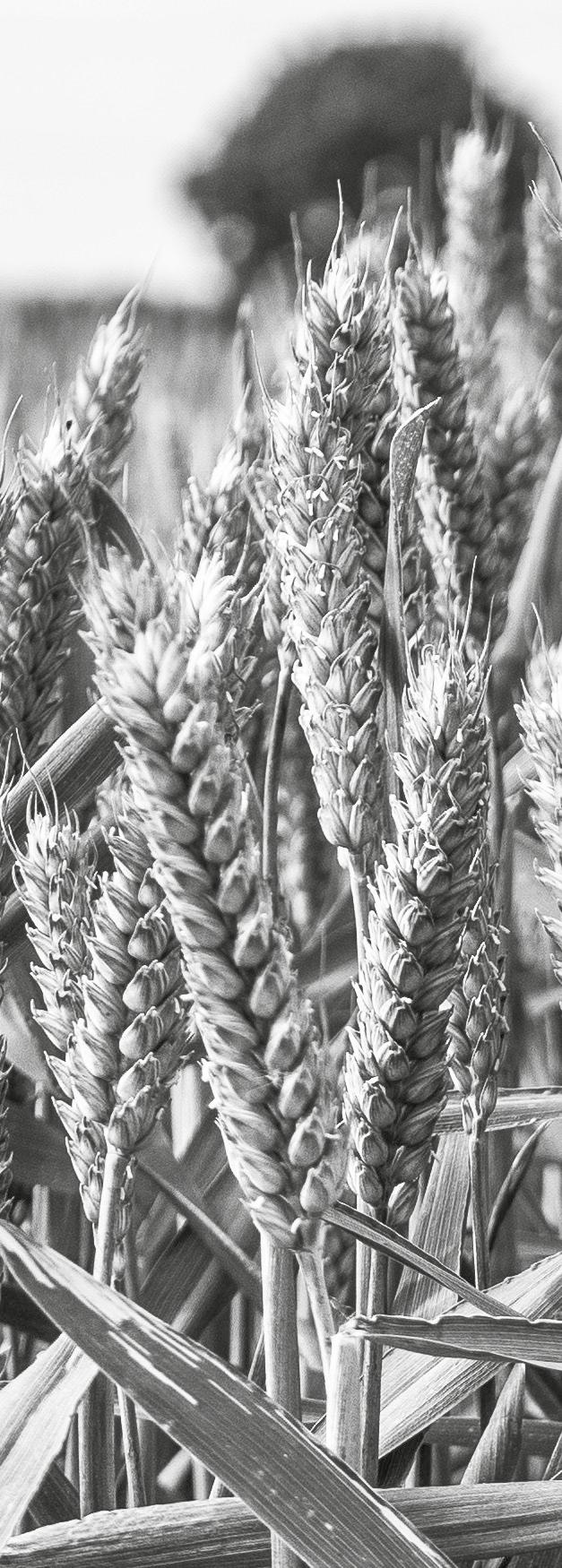
High yields and good disease resistance are the foundation of the best wheat varieties – but physical properties are set to become increasingly important.

That was the message from KWS UK country manager Will Compson at last month's Cereals event. Traits such as lodging resistance, early harvesting capability and overall resilience are also becoming a priority as growing conditions become increasingly challenging.
"KWS Dawsum and KWS Extase will together account for 30% of all wheat fields harvested in 2023," said Mr Compson. "This is likely to grow in the future, not just because of their reputation for consistent high yields and strong agronomics, but also because of their proven resilience.
"Look below the headline figures and you'll see untreated yields of 97% of controls for KWS Extase and 95% for KWS Dawsum. That says a huge amount about their physical strength and reliability across several years of differing growing conditions.
"Every year seems different now. After some very wet autumn periods in previous
years, last year was kinder and somewhat dri er, for example, but there were still some very severe cold snaps through the winter.
"As we went into spring, it turned very wet with many areas experiencing double their normal rainfall, which has resulted in high levels of Septoria and T1 and T2 applications being delayed in many cases.
"Then it turned very dry with the June heatwave adding to this and lodging becom ing foremost in many peoples' minds dur ing the heavy downpours that accompanied this."
Although lodging hasn't really been an is sue in recent years, it is always a problem to be aware of, particularly as many PGRS seem to be in short supply at the moment, he pointed out.
"Fortunately, varieties like KWS Dawsum and KWS Extase have good standing power. New KWS varieties, such as newly RL-list ed varieties like KWS Ultimatum and KWS Zealum, also share this feature.
"Super-stiff Group 4 soft variety KWS Zealum is the highest yielding early-sown winter wheat on the Recommended List while Group 2 KWS Palladium and KWS Ultimatum are worthy partners to KWS Extase.

"This particularly the case with millers turning more of their attention to these varieties in the absence of new Group 1s coming forward."
On the winter barley front, KWS Tardis continues to be the most popular variety grown in the UK with a 40% market share, he added.
Like Orwell and Cassia before it, stem stiffness contributes to its popularity alongside very good grain quality and a sound agronomic package," says Mr Compson.
KWS UK winter barley breeder Gabriella Everett said the new variety KWS B157 (KWS Heraclis) will hopefully build on the success of KWS Tardis.
"It's a Tardis and Paloma cross which will be up for sowing into the RL this autumn and is proving to be an exceptionally high yielding 2-row option with great potential for the future."
KWS Heraclis currently has higher yields than all the controls in NL2, including sixrow hybrids, and this is combined with very high untreated yields too.
"All in all, it's a very well-rounded variety with the best combination of yield, both treated and untreated, hectolitre weight and
stem stiffness in the current NL. Its maturity and specific weight is very similar to Tardis, as is its disease package."
Kate Cobbold, of KWS, predicts that a new range of hybrid barleys will be joining the company's conventionally-bred portfolio to add a greater range of options for growers in the very near future.
"The first of these varieties will be KW211961, named Inys, following a very good year where it was the highest yielding of all hybrid barleys in the first year of National List trials with a 2% yield advantage over the current best-selling hybrid variety.
"Disease-wise it has a strong all-round package with a high untreated yield and good brown rust and mildew scores comparable to the most widely grown hybrid barley.
"It's a definite step ahead in net blotch and rhynchosporium resistance compared to the most popular hybrids, as well, with slightly earlier maturity, significantly less brackling and a good specific weight."
Alongside Inys, there are three hybrid barleys in NL1 and a strong breeding pipeline coming through in the years ahead.
"Hopefully the first commercial sales of KWS Inys will be made next year and this will be followed by further varieties from the portfolio of KWS hybrid varieties after 2025."
Our varieties undergo 10 years of UK testing before 3 years of Animal and Plant Health Agency Variety trials for UK and Northern Ireland to confirm value for cultivation and use.
With more extreme weather and regional variation choose robust, resilient varieties for 2024 sowing. All varieties are rhizomania tolerant, and in addition Jackdaw is tolerant to Beet Cyst Nematode and Osprey to the more aggressive AYPR rhizomania. All are available with our own proven pellet technology and quality.


Wren, Adder, Osprey and Tawny are also on the BBRO Recommended List.
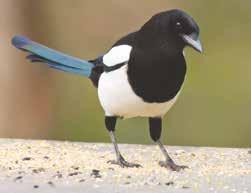
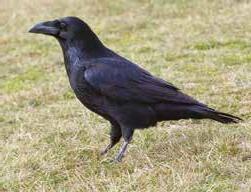




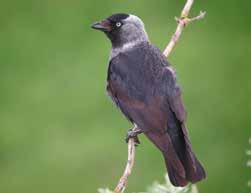
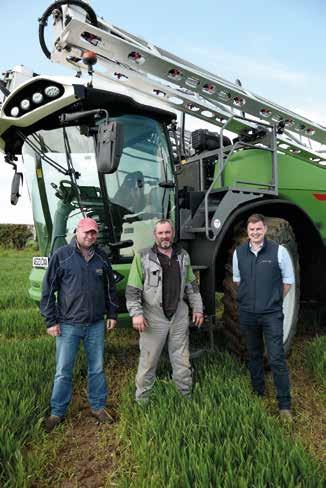
ANorfolk farmer says his recently purchasedFendt Rogator sprayer has rapidly become his most important machine.
Trading as Avocet Farming, Mark Gill grows some 900ha of cereals and 560ha of maize on owned, rented and contract-farmed land at Coston Hall, near Norwich. Mark manages the arable business and an AD plant. His brother John runs a dairy operation.
The arable division supplies straw and machinery to the livestock enterprise. Manure from the dairy is applied to crops and fuels the AD plant.
Diverse cropping
Land is mainly medium loam, but there are also areas of lighter and stronger soil. Under sowing, companion cropping and cover cropping are used to optimise productivity.
Strip-tillage allows double-cropping of maize behind rye so two crops can be harvested in a single season. Rye is either combined for grain or harvested as forage for the AD plant.
Digestate applied to land optimises soil health and provide organic fertiliser. But some is also bagged and sold as green compost for gardening under the Grow Greener name.
The farm used trailed sprayers until 2018, when wet weather hampered mobility and resulted in deep wheelings.
“I did most of the spraying that season and became very aware of the mess created by the tractor and sprayer combination,” says Mark.
“It tracked well, but having three axles meant a lot of crop was run down when reversing into corners and negotiating obstructions. We tried sev-
eral self-propelled machines before deciding on an AGCO Challenger Rogator with a 5,000-litre tank and 36m booms. Although the trailed sprayer it replaced had a 6,000-litre tank, work rates were up to 35% higher.
“It revolutionised our spraying, and also made it practical to use two sets of wheels,” says Mark.
With all four wheels driven and tracking perfectly during turns there was little ground damage, even in the wet, and especially on wider tyres.
“Our trailed sprayer wouldn’t have travelled in some of the conditions where we have used the self-propelled machine. Owners of the land we contract-farm are very happy with its performance and light footprint.”
The Challenger Rogator was replaced by a new Fendt Rogator 645 from Thurlow Nunn Standen this spring.
“We started talking about updating the machine in early 2022 and ordered the Fendt without hesitation and without considering anything else, as we knew it was the best machine for the job,” says Mark.
“We have lots of small fields and an average size of only 9ha, so the booms are folded and unfolded frequently but showed little sign of wear, never giving us any problems, right up until the five-year old sprayer was traded in.”
The new Fendt version features upgrades and design improvements over earlier machines – additions appreciated by operator Neil Mendham.
“Like the previous AGCO Rogator, the new Fendt version is exceptionally smooth and quiet,” he says.
during headland turns just to en sure they can’t strike the ground.”
Improvements include extra automation, including automatic tank rinse and cleaning. QuadSelect nozzle bodies mean rates from 100–400 litres/ha can be achieved while maintaining treatment efficacy.
Operator comfort is further enhanced by the larger 60-litre chemical induction hopper which boasts a new OptiFlow electronic valve control from an external terminal beside the filling point, or from duplicated controls in the cab.
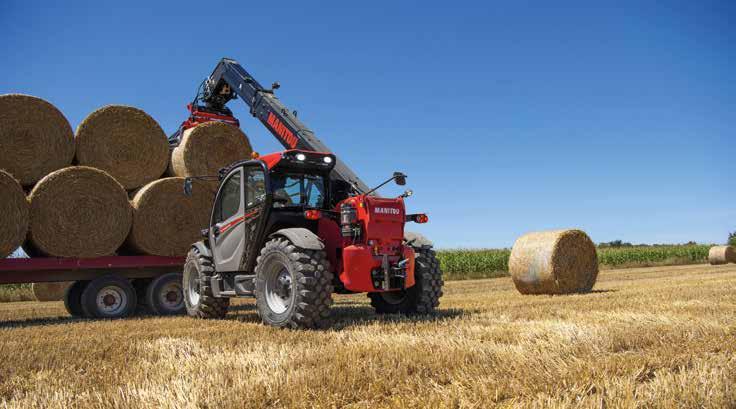



















An independent recycling scheme is offering growers and livestock producers a stressfree way to dispose of farm plastics.
The Green Tractor Scheme brings together companies which collect plastic waste from farms. And unlike some collection companies, they ensure the waste can be reprocessed back into usable plastic.
Rules and legislation requiring farmers to dispose of plastic responsibly rather than burning or burying it have been in existence since 2005. But not all plastic collection companies recycle plastic waste in the proper way.
“It's an increasing challenge for farmers who are under more scrutiny to prove they are doing the right thing,” says Green Tractor brand champion Joe Farmer. Farmers need to ensure their waste is being recycled – or run the risk of being caught out, he adds.

“A waste transfer note is supposed to be the legal proof that waste has been transferred the correct site. But
sometimes the tonnages don't add up –which means some farmers aren't doing all the recycling they're supposed to be doing.”
Since inception, the Green Tractor Scheme has diverted close to 41,000 tonnes of farm plastic from being sent to landfill. To make this possible, the scheme has serviced on average 17,500 farmers each year.
“We try to keep things simple,” says Joe. “We try to ensure the agricultural community is at the heart
• An assurance that any waste collected is fully, legally traceable and accredited.
• All Green Tractor collectors are annually accredited.
• No hidden fees.
• Use the Green Tractor Scheme badge to show a commitment to positive change.
• Indemnity from fines regarding mishandling waste management by ensuring your waste is handled correctly.
of every decision we make. We are as transparent as possible and we don't charge extra levies on top of the recycling price.”
To use a Green Tractor accredited collector, farmers simply visit the Green Tractor website. They then choose a suitable waste collector nearby from a list of companies which are part of the scheme.
“It's completely the decision of the farmer,” explains Joe. “They can contact whoever they like – and they can also compare prices because each collector is independent and may have a slightly different pricing structure.”
Accredited collectors then collect the plastic waste from the farm. The plastic is then reprocessed by the waste collector ready for the next step of the recycling process.
The Green Tractor head office is in Lincolnshire. The directors each have their own company – Agri.Cycle, Grassroots Recycling, Solway Recycling and Emerald Isle Recycling –but there are member companies too.
“Our scheme is national and we have coverage across England, Scotland, Wales and Northern Ireland,” says Joe. This means we have the necessary infrastructure to service UK farm plastic to be collected and recycled to the highest environmental standard.”
• All collectors are audited annually to ensure the high standards of Green Tractor are accredited. Continued overleaf
“As we all know, no plastic has ever
It’s simple and transparent
“

Continued from previous page
disposed of itself incorrectly – it is the behaviour of people that creates the conditions for the scourge of the environment with improper waste disposal. The agricultural industry has that same problem itself.
Green Tractor is working with NGOs, businesses, legislators and farmers to ensure agriculture reaches sustainability targets set by the UK government and prevent farm plastic from being disposed of incorrectly.

Zero to landfill
“We are a key part of the national crusade to achieve zero to landfill, and our ambition is to increase the quantity recycled to over 70% by 2030.” says Joe. “It is a lofty ambition but a necessary one to help make farming a more sustainable industry,” he adds.
To help reach this goal, Green Tractor is involved in multiple projects to help raise awareness of farm plastic recycling. These include working with other businesses – including Anglia Farmer – to raise awareness of the scheme, working with agricultural colleges to educate the future of farming on the importance of recycling, and
providing agriculture with the knowledge to recycle correctly.

The aim is a sustainable supply chain. Corporate ambassadors in clude Agrii, Asda, Dengie, Shorts Agricultural Services, Smartlift Bulk Packaging, Vanden Recycling, Witham Oil Group, Woldmarsh Producers, Yara and Zeus Packaging.
Provide audited totals of the quantity of farm plastic collected and recycled
• Further increase the volume and quality of plastic recycled

• Educate farmers to reduce contamination within their waste plastic
• Provide the supply chain with corporate responsibility re plastics they put into the market
• Assist with exploiting new technology for the reprocessing of farm plastic
• Lobby government and other bodies as required for support to increase plastic recycling facilities within the UK
am also a farmer,” says scheme chairman Robert Moore.
Revolutionary scheme
“I know from experience the importance of doing things right on the farm. Being able to be a part of a revolutionary scheme to help farmers recycle the right way is a fantastic opportunity that I am proud to be a part of.”
scheme and through our corporate ambassadors. Funds are all reinvested to improve the scheme. “There is no additional cost to farmers and no levy on new plastic products,” says Joe.


“Being the lead representative for a ground-breaking scheme is a lot of responsibility, but it’s a responsibility I love. It’s great to be out there making a difference for UK farming.”
The key to efficient recycling is the segregation of waste material at source and keeping it dry.
Pesticide cans must be triple rinsed
Seed bags, feed bags and fertiliser bags should be placed inside one another or tied in manageable bundles
Cardboard should be flat-packed and stacked and tied in bundles
Silage wrap and crop cover needs to be dry and free from as much contamination as possible
Trickle tape and irrigation piping must be coiled
To contact the Green Tractor Scheme, call 0800 246 5171 or visit www.thegreentractorscheme.co.uk
With over 100 years of lubricant & paint expertise, we are proud to be preferred suppliers of award-winning oils, greases and other essential products to leading agricultural buying groups, farms, estates and agricultural distributors


withamgroup.co.uk


Oilseed rape remains a key option for growers yet to finalise planting autumn planting schedules – despite recent challenges faced by the break crop.
Some growers might decide to take a step away from rape following an uncertain winter period where flea beetle, pigeon damage and the effects of
“Aviron too will remain a key variety with its traits and its excellent vigour in both autumn and spring making it suitable for later drilling.”
New candidate Academic will offer greater gross output and again better northern performance than Aviron, whilst delivering a gross output on par with Attica, says Mr Bouch.

at time of sale and it has very strong scores for standing ability. Sclerotinia tolerance has shown a 15% advantage
DK Expose can offer the same traits as the four suggested Limagrain varieties, however without the advance in yield that both Attica and Academ-
“Clearfield is a simple choice for me as Matrix CL is most definitely the standout performer at this moment in time and tops the ADHB listing for
“Clubroot is likely to be more widely spread again and I think LG Scorpion ticks all the boxes here with excellent vigour and establishment, decent disease scores and TuYV resistance.”
Conventional varieties remain in favour for the home saved seed market. Mr Bouch recommends Acacia, KWS Campus and Annika for those who want the TuYV trait in a conventional variety – although he says it is
“Not having ‘your eggs all in one basket’ should be adhered to where possible and certainly hybrids, my preferred route to both establishment and traits, offer more than one man-
“The biggest single consideration remains the conditions at time of planting. If soils are warm and more importantly there is sufficient moisture, then oilseed rape still provides a
The market for oilseed rape is likely to remain static, says David Bouch
• Be patient – don't rush applications
• Helps ensure crops ripen uniformly

• Can tackle challenging weeds too


Farmers managing oilseed rape with glyphosate before harvest are advised to use a pod test to make applications at the optimum timing.
Although oilseed rape can aid harvest management by encouraging crops to ripen uniformly, it is important that applications are timed correctly, says Bayer commercial technical manager Matt Siggs.

“First of all, don’t be too keen,” says Mr Siggs. “Applying too early could reduce yield and oil content plus increase the amount of red seed.”
Mr Siggs recommends using a pod test to check the crop. Spray when senescence has begun so check the pods, he says.
Proven on farm with outstanding yields
lgseeds.co.uk/ambassador
“Go right into the crop, not the headlands or tramlines to find a suitable place to sample. Look for an area of canopy which is representative of the field, this may be the main raceme or side branches depending on the crop.
“Choose 20 pods, if in 15 of these pods, at least two-thirds of the seed has changed from green to brown then it is safe to start spraying. If you are a bit below the threshold, come back in three days to check again.”
Perennial weeds can be targeted with the same application. Glyphosate translocates to the rhizome helping to control weeds long-term. A higher rate of 1440g/ha is needed against perennial weeds. If there are only annual weeds 1080g/ha is sufficient.
“Think about how the spray fits in with the weed control programme and the next crop. Fields going into wheat are likely to have a big gap until drilling so the additional weed control can keep stubbles cleaner for longer.”
The aim is for glyphosate to reach all the pods and any green material at the base of the crop;
AMBASSADOR FULLY LOADED HYBRID OSRDavid,
Scottish Borders
“ IT HAS
Optimising glyphosate application can help harvest management
hence the application needs to penetrate through the entire canopy. A medium–coarse spray is a reliable option for canopy penetration.
In thicker crops, higher water volumes of 200l/ha can improve coverage but always pay attention to the link between forward speed, nozzle choice and optimum pressure to ensure effective application.
Time of day can make a difference. “There is typically higher humidity earlier in the day which means stomata are open increasing glyphosate uptake.”
Harvest interval
“Remember, glyphosate cannot enter the plant without a surfactant so an optimal loading of

a quality adjuvant is essential. Increasing the dose will not make up for a poor, underloaded formulation.”
Maximise uptake
Modern glyphosate formulations aim to maximise uptake in a range of climatic conditions to give better, more consistent results. High temperatures and thundery downpours are two risks at this time of year which can be mitigated by better formulations.
There is a statutory 14-day interval from spray until harvest, but individual crops may need up to one week longer to fully ripen. Growers should monitor each crop closely to decide when to start combining.
Preparing sprayers correctly will improve desiccation – and make life easier for operators.

Just a few minutes checking over a farm’s sprayer before moving into oilseed rape crops will be time well spent, says John Wooding, technical sales manager at Knight Farm Machinery. Even application.
“While the oilseed rape area has dropped back, it’s still a significant UK break crop, and desiccation remains the best way of speeding up plant ripening to match seed maturity.”


Good sprayer preparation is critical to ensuring desic-
cants are thoroughly and evenly applied. This means operators should ensure machines are well-prepared if they are to achieve best results.
Tyre pressure
Correct tyre pressure is vital – on the tractor as well as the sprayer if you are using a trailed machine. If you are not using a GPSbased rate controller, also ensure your sprayer is calibrated correctly according to the wheels fitted, says Mr Wooding.
“Make sure belly sheets are in good condition and securely fitted, and that any tines fitted to Continued overleaf
removed so crop doesn't snag.
Boom height
“We repair three or four boom sections each year damaged this way. Check you are using the best nozzles for the job, and have selected the best rate for the product and the density of the crop,” says Mr Wooding.


Once in the field, growers should check their boom height is right for the crop. This should be low enough for








Glyphosate is now the only chemical option following the removal of diquat. But growers must remember that it cannot be used on seed crops.



"It's best to aim for application 14-20 days before harvest. Seed moisture should be at 30% or below for glyphosate application,” says Dick Neale of crop protection experts Hutchinsons.





















“Rates of glyphosate need to be robust – at least 1440gms of active, and if using generic products then its important to add in the required adjuvant.
Once work is done, ensure all plant material and residue is cleaned off in the field. Sprayers should be washed externally. Internal cleaning should be thorough, adding a recommended cleaning product at the recommended rate to a tank of clean water.
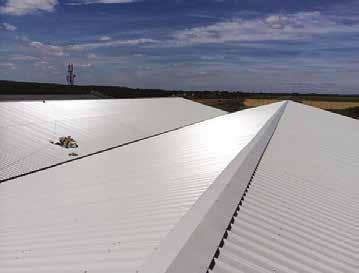
























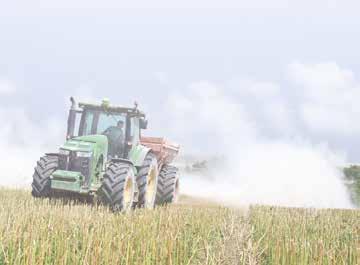
“This will ensure no desiccant remains, and will also help keep sight gauges clear, as these can become clouded from residue if pod sealant has been used.”


Glyphosate is susceptible to cations in water. This can cause lock up of the active and reduction in the ability for the herbicide to work effectively. Adjuvants have a growth stage cut off for use with 100% dose of pesticide.
“If preferring a non chemical route then swathing is an option – but really only tends to suit crops that are thick and are leaning. It's important when swathing to keep the swathed crop off the ground to allow for air flow.”


“Of course, if a crop is weed free and very even, there is the option to do nothing and let it ripen naturally. This is useful if there are large areas of oilseed rape to harvest and you are trying to spread out the harvest window.



























“But the crop will take longer to ripen which means this is not really an option the further north you go due to the lower temperatures and higher moisture levels.”
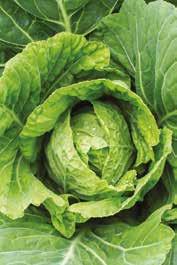



Mark Weatherhead Ltd




Telephone: 01954 210 355
Mobile: 07885 202 005
Hardwick, Cambs CB23 7QL
Steel Portal Framed
Grain Drying and Storage

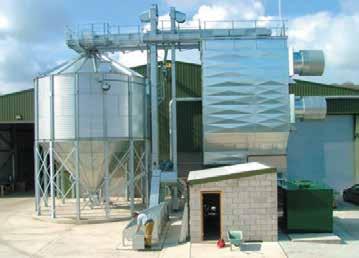
• Grain drying and storage

• Groundworks and drainage
• Electrical engineering works

• Elevator/conveyor repairs
The tough grain
• A vertically standing, crop cooling and conditioning system.


• Draws heat out of floor stored crops, helping to maintain crop quality and price.



• Cost effective and flexible solution that ensures crops stay free from moulds and insects.


Stronger
• Recommended for small seeds like Oil Seed Rape.
• No need to have an additional filter for small seeds.
• Louvred slots are less likely to block so equal air distribution is maintained through the crop.
Seed specialist RAGT has relaunched its oilseed rape programme with some promising varieties showcased at last months Cereals event.

The first two varieties stemming from the programme took centre stage at the two-day event – and both will be commercialised in time for growers this autumn.
RGT Kanzzas is a high biomass variety with early spring vigour and medium early maturity. It is a Recommended List candidate for the East/ West region.
“This is a great package,” says RAGT Seeds managing director Lee Bennett.
“It has amazing light leaf spot resistance, the best of all varieties in official National List trials – no other variety can hold a candle to it.
Phoma resistance
“It has solid phoma resistance and is a real grower, with good establishment and spring vigour. It is short, stiff and early to mature and so consistent for output and pod shatter resistance – it takes some beating.”
The other oilseed rape variety is HRF19240 – marketed as RGT Blackmoon in Europe. Described another growy type, it is currently undergoing NL2 trials in the UK.
“It is stuffed full of yield, grows like nettles, and is resistant to turnip yellows virus. It also has pod shatter resistance. Across Europe last year it didn’t matter where it was, if it wasn’t top it was right up there.
“That to me says one thing: it is adaptable in a wide set of circumstances,” says Mr Bennett.
Limited amounts of seed will be available for both varieties this autumn. RGT Kanzzas will be available through Agrii, with HRF19240 available from ADM Agriculture and Williams Seeds.
Several very promising new wheat, oilseed rape and barley varieties from
RAGT Seeds are also making their de but, delivering some strong pest and disease resistance traits alongside ag ronomic improvements.
Winter wheat variety Genserus is named for its genetic security – and denotes RAGT's varieties which car ry the gene that confers resistance to barley yellow dwarf virus.
“The trait offers protection from the day the wheat is planted to the day it is harvested, for less than the cost of a single pyrethroid spray. It great ly simplifies crop management, while benefiting the environment.”
RGT Grouse is the latest in the pipe line of Genserus varieties. This Group 4 hard Recommended List candidate has the added benefit of resistance to orange wheat blossom midge.
Earlier sowing
“This double resistance will enable many growers to produce insecti cide-free wheat, which has obvious attractions within all markets,” says Mr Bennett.
RGT Grouse is a slower developing type, so is highly suited to earlier sow ings when the risk of BYDV is at its highest. It has very good yield poten tial and disease resistance.
“It is a good-looking wheat with prostrate autumn and winter growth and high tillering capacity. It also retains tillers, which lends itself to a denser canopy. Ear fertility is good and the variety has an outstanding bright finish.”
Anticipating keen demand, RAGT has fast-tracked seed production, so limited quantities of commercial seed will be available for autumn 2023.
RGT Orcade is RAGT's first commercial winter barley. This two-row feed variety is tolerant to BYDV. To have a commercial presence in the winter sector is a very exciting progression for RAGT, says Mr Bennett.
“RGT Orcade is currently in NL2 trials so a couple of years from commercialisation, but it looks promising
Two new rape varieties are available this autumn, says Lee Bennett
and brings a very strong disease resistance package to the market, with high scores against all major pathogens.
“It also produces plenty of grain with a very decent specific weight.”
A new spring barley also features in the form of RGT Eclipse, an RL candidate variety which is up for full recommendation this autumn. This potential brewing barley has the highest hot water extract figure in its group.
Yield is on a par statistically with Laureate, and the variety’s high untreated yield suggests robust in-field resistance to the major foliar diseases. It produces high specific weight grain and matures early.
“It looks a very good variety and not only for the UK – we believe it has pan-European potential too,” says Mr Bennett.
It has amazing light leaf spot resistance

Seed breeder DSV displayed the first two oilseed rape varieties for UK growers fea turing the company's new PhomaBlock er trait at last month's Cereals event.
The varieties – WRH 637 (Cognac) and WRH 651 (Ludwig) – combine two complex resist ance mechanisms, adding LepR1 phoma resist ance to RLM7 resistance to offer farmers en hanced protection from the disease.
Both varieties are currently in National List trials, says DSV's Sarah Hawthorne, who says the development represents a step-change in progress. "We have moved phoma resistance in oilseed rape several stages further on."

Impressive package
Phoma resistance is combined with extremely high yields and an impressive agronomic pack age including turnip yellows virus (TuYV) pro tection, verticillium wilt tolerance and strong light leaf spot (LLS) resistance scores.

"DSV now has varieties with all three pho ma resistance mechanisms – RLM7, RMLS and now LepR1 – which can be rotated in the field
years experience in the roller shutter industry call us anytime for a competitive price.











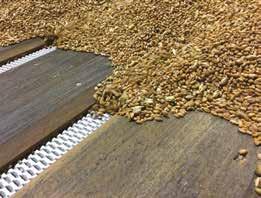


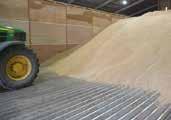


Flach
Email:


Twin hold roll pin blade removal system and backward leaning air borne upper blade for trash lift and ease of trash flow
Seed depth tail 40mm deep holding the seed at correct depth and placing seed on either side of seed terrace
for exacting maximum returns from SFI without losing crop output
SOIL SURFACE
Triton launched its unique deep soil engagement direct drill in 2018 to give plough based yields from direct drilling. 6 years later we are consistently achieving higher yields from the Triton than from ploughed trials on our own land. The Triton is the only all weather seed drill on the market that gives the flexibility to grow maximum profit autumn sown crops whilst reducing blackgrass from late drilling... several manufacturers are now also claiming all weather capability... if these are false claims then the farmer’s new approach will be thwarted.

Downward facing upper blade does not hook grass weed seed up from below stale seed bed and field surface
Triangular tungsten tiles for reduced draught and soil disturbance
draught and soil disturbance
SOIL SURFACE
Drilling at 40mm depth
Downward facing upper blade holds field surface in place minimising soil eruption in the stale seed bed

Drilling at 40mm
Downward facing upper blade surface in place minimising soil eruption in the stale seed bed
14cm deep lower blade takes blade deep below ground for air drainage and rooting

Buying a blade drill is now an open and shut case. Why? Because only the Triton drill has a slot closer
lower blade takes blade deep below ground for air drainage and rooting
The ‘must have’ seed drill
Varietal choice will be a key decision for oilseed rape growers this autumn, with experts divided over prospects for the crop next season.

Dalton Seeds sales manager David Huish believes the winter oilseed rape area could be 10% down – with lower prices weighing heavily on farm profits and the need for growers to combat weeds like blackgrass.
“The main reason is that the oilseed rape market has dropped considerably, and the value is getting closer to the cost of production. Also, many growers have problems of blackgrass and are introducing more spring cereals on the farm.”
But some breeders are more optimistic. They include Grainseed general manager Neil Groom, who anticipates an increase in area. Consistent and high yielding varieties mean rape remains a good break crop, he says.
“Commodity prices could increase with recent activity in Ukraine and Russia. Global prices shift so quickly that in a year the value of seed could easily by higher again and the growers make an excellent profit again.”.
Either way, both experts agree good vigour offers growers the best chance of success when growing the crop –whether the final choice is a hybrid or conventional oilseed rape variety.

Hybrids are often thought more vigorous than conventionals – but that isn't always sp, says Mr Huish. “Vigour needs to be both in the autumn to allow the crop to grow away from cabbage stem flea beetle and in the spring to get away from the winter.”
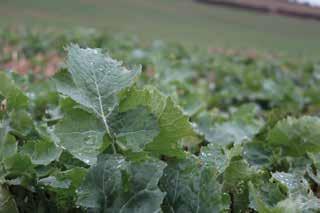
Popular varieties this year have been hybrid variety Aurelia, conventional Acacia, hybrid Ambassador and conventional Campus. This last variety has been grown for more than 10 years. It is popular because it performs consistently well.
Grainseed oilseed rape Pinnacle is also a conventional variety. Breeder Mike Pickford says it has performed
well in official and private independent trials – and has consistently outperformed many conventional and hybrid varieties.
“In national list one trials, Pinnacle yielded 108% which was 5% more than Campus,” says Mr Pockford. In national list two trials, it outperformed Campus by 4%, yielding 104%. “It was the top conventional variety.”
Mr Pickford says he breeds varieties ideally suited to UK conditions. “My philosophy is simple – the goal is to improve individual yield components, such as increasing the seed size.
“Pinnacle has seed with a thousand grain weight between 6.5 to 7gms compared to Campus at 5-6 grammes. The varieties I have bred in the Cotswolds are just right for our conditions.”
Rapid growth
Pinnacle has similar vigour and biomass to hybrids, adds Mr Pickford. “It shows rapid growth during the stem elongation phase and in terms of agronomics, it has a top 9 rating for lodging resistance and an 8 for stem stiffness.
“It also maintains clean green stems when ripening allowing more efficient photosynthesis during the ripening grain filling process. In terms of ripening, it is medium to early, like Campus.”
This is important because it allows the following crop to be planted in good time whist the rape seed is already in storage,” says Mr Pickford. Pinnacle is a large-seeded variety with good oil content of 44.3%, he adds.
Mr Huish has seen Pinnacle in trials for three years –and hopes it will perform well this year too.
Neil Groom has high hopes for oilseed rape variety Pinnacle Conventional variety Campus (below) performs consistently well
A successful variety must yield consistently well, particularly if you are looking to make an impact on such a strong variety as Campus.
“Pinnacle needs one more year to show its consistency,” says Mr Huish. Chosen varieties also need a good disease package which lends itself to consistent performance. As for most Grainseed rape varieties, Pinnacle has a great disease profile. It scores 7 for light leaf spot, 6 for phoma and has good verticillium resistance.”
Grainseed general manager Neil Groom says Pinnacle offers growers peak yields and consistency. The extra 5% over Campus last year was well worth it, he adds. We are assuming rape prices at harvest next year will have steadied and be around £400/tonne.
“If we take the yield from the Recommended List candidate table for seed yield, Campus yielded 5.05 t/ ha. At £400/t, this results in £2020/ ha – but Pinnacle yielded 5.25t/ha giving a total figure of £2100/ha which is £80/ha more.”
Growing a high yielding consistent variety like Pinnacle with good price levels will make rape an excellent break crop to sow this autumn, adds Mr Groom.
“We have a small amount of seed this autumn if growers would like to try it – and we have high hopes for this variety in the future.”

It was the top conventional variety
“

New safety caps will be available to growers on BASF’s oilseed rape crop protection products from autumn 2023.
The caps enable the use of the EasyConnect Closed Transfer System (CTS) and mark a milestone in UK agriculture, says BASF – as new CTS filling methods make farm operations more convenient and safer for users and the environment.
The system consists of two components: an EasyConnect cap, which comes pre-fitted on product containers; and the EasyConnect coupler, which supports the safe and drip-free filling of the spray tank with liquid crop protection products.
Step forward
BASF head of technical management

Rob Gladwinsays the CTS provides farmers with a compelling combination of increased safety and conveni-

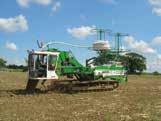


ence when filling the sprayer. It is a step forward in responsible product stewardship, he adds.
“This is an important step forward in our journey to ensure the responsi ble stewardship of our products, sig nificantly reducing the potential risk of point source pollution and increas ing operator safety.”
On-farm trials
Yorkshire farmer Nigel Durdy, of Ni nevah Farm, near Doncaster, sprays some 4000ha of mainly combinable crops annually with his 36m Rogator sprayer. He is one of the pilot farmers from across the UK trialling the new system.
“It’s a step forward, once the EasyConnect caps are on the cans there will be no reason not to use it. The CTS lowers operator exposure from a spillage point of view and really lowers the chance of point source contamination.
transfer system makes spray filling safer and spill-free
go wrong. It is quicker and easier.”
Operators place the can on the machine. After it is emptied, pulling a lever rinses the can, with the closed transfer system reducing the chances of spillage or splashing
"The whole agricultural industry will be using it in time as things move forwards. But if growers receive a product with an EasyConnect cap and do not have a coupler, they can simply unscrew the cap as normal.”





•
•
•
•



www.plugandcool.co.uk
It can sometimes be a bit confusing when it comes to keeping your grain cool. What techniques are the most efficient? How much will the equipment cost? Which system is the best value for money?
The team at Plug&Cool does its best to make life easy for farmers when it comes to cooling grain. All the Plug&Cool products are designed for easy connection across the range. From the energy-efficient grain cooling fans to the multi-zone control panel and all of the accessories in between, everything is fitted with either a single-phase or a three-phase plug. So, there’s no need to call out an electrician to get everything set up. .
Richard Speakman, of Sandon Lodge Farm, Sandon, has been using the Plug&Cool system for over three years. The fourth-generation family business farms 826 hectares of cereals and 165 hectares
of grass for hay and a spring lambing flock of North Country Mules. Throughout the year, the farm will store over 4000 tonnes of winter wheat, winter barley, winter beans, and spring barley. The Plug&Cool system is the ideal solution for his flat floor grain stores, utilising the higher-powered 2.2Kw aluminium cooling fan combined with twinwalled poly pedestals.
Mr. Speakman had this to say about Plug&Cool: “I would absolutely recommend Plug&Cool to any farmer looking to prepare their grain store for this year’s harvest. We tend to store grain from the summer period right up to Christmas time and into early January. The products are highly durable and more effective than the previous galvanised bottoms and you don’t lose the pedestal base when taking it out! We chose Plug&Cool because they are a local supplier with exceptional after-sales advice and a 24-hour, 7 days a week support service. I think the service they provide, especially in today’s current climate is second to none. As soon as we placed the order with them, everything arrived on time
with no delays, and the aftercare service was excellent.”
The poly pedestals have proved to be a great success ever since Plug&Cool began supplying them to farmers across the UK. The new pedestals are now 1.5 meters high compared with the previous model and because they are taller, they have far more ventilation slots that allow for greater extraction of warm air from the grain. As well as being much larger and tougher than their metal counterpart, they are also resistant to any rusting caused by a build-up of condensation in and around the pedestal. Now is the time to start thinking about how to store grain effectively, and one of the easiest and most cost-effective solutions is a pedestal system combined with an energy-efficient, grain cooling fan.
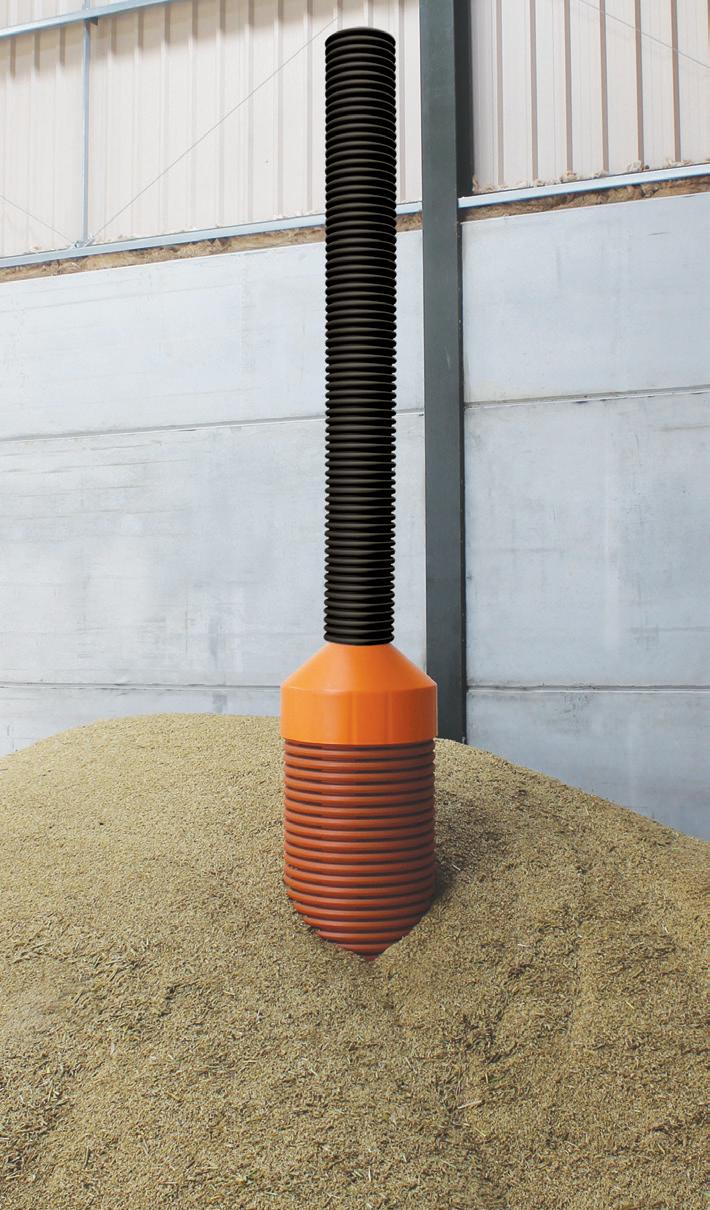
Plug&Cool is now the fastest-growing supplier of grain conditioning products in the agricultural market. With large stocks of aluminium grain fans, poly pedestals and aeration spears, the Essex-based supplier is in the ideal position to support Farmers for this year’s harvest and beyond.

Improved protein of cereal, reducing bought in protein costs
Better DLWG, finish animals faster and heavier
Improved milk production and fertility
Improved total diet digestibility +5%
Soya free treatment for sustainable diets
Reduced acidosis risk
Maximise profit, improve feed efficiency
UK wide grain processing/treatment

Fully supported by our team of specialists and nutritionists
The only guaranteed complete grain treatment
Rapidly increasing changes to farm support means sheep producers should seek pro fessional advice, say experts.
The removal of the Basic Payment Scheme means almost all sheep farm ers face big changes, says the Nation al Sheep Association. This includes adapting existing production sys tems, diversification and applying for new schemes.
NSA chief executive Phil Stocker says: “With so many changes to farm support being implemented or on the way, it can be challenging for farmers to know which direction to take their business – and which, if any, new scheme is suited to their systems.
Information is readily available for schemes already open for applications, says Mr Stocker.
But the volume can be overwhelming and it is not always clear – so how can farmers ensure they can make the most of what is on offer to them?”
The answer may be using a professional livestock adviser such as a member of the Register of Sheep Advisers (RoSA) – a network of well-rounded professional advisers working within the UK sheep industry.
Advice includes guidance to help sheep farming businesses adapt during and beyond the transition, including ways to join agri-environment schemes and other funding.
The register was established by the National Sheep Association and BASIS Registration in 2021. It directs farmers to advisers with specialisms including business management, electronic reading systems, animal health, nutrition and breeding.
Farm business consultant and sheep producer James Oliver says: “The RoSA network is critical in these ever-changing times with significant shifts in payments and how the government is issuing support.”
Farmers need to embrace change rather than be scared of it, says Mr Oliver. Many produers are already doing a lot of the work needed to receive payments so they should be able to easily tap into these schemes.
“With increasing capital costs in farming, these can help with infrastructure such as fencing and hedging. There are a lot of good advisers out there with practical sheep experience who can relate to their clients and help them to increase their resilience."
Mr Stocker says the sheep farming sector is likely to be tested by huge forthcoming changes in land use and farm support, driven by global issues of food security and environmental challenge.
Changes to support mean many producers must adapt the way they farm
“If sheep farmers are going to adapt and succeed, its likely more will want and need advice. Therefore, it’s important there is a network of well-informed, trusted sheep specific advisers and this was the reason for the formation of this register.
“Taking advice, whether that is on policy change or practical sheep farming matters, should not be judged as a cost but by what benefits it will bring to the farm business."
For details, visit www.sheepadvisers.co.uk
Asheepdog training event will take place in Suffolk this month – helping youngsters take their first steps in the industry.
The training day will be held by the International Sheepdog Society in conjunction with the National Sheep Association Next Generation programme. Dog trainer Ed Hawkins will host the event on Thursday 20 July at Hadleigh Estate, Ipswich.
Whether attendees are looking to purchase their first working sheepdog or want to make progress with a new or young dog, the workshop aims to buld the foundations for a successful working relationship with the sheep farmers’ canine best friend.
NSA communications manager Katie James said potential attendees should register their interest as soon as possible to secure a place at the workshop, which was free to attend but must be booked online in advance.
“Sheepdog handling is one of the most vital shepherding skills – so we are pleased to be able to offer this session to give young sheep farming enthusiasts some basic advice on how to get the best from their sheepdog.
The day is aimed at 16 to 35-year-olds but all ages will be welcome,. Uunder 16-year-olds must be accompanied by an adult. For details, email enquiries@nationalsheep.org.uk or visit www. nationalsheep.org.uk/events.

Livestock producers are being encouraged to re-consider home grown concentrates to bolster rations where silage analysis indicates low energy forage.
Wet weather this season has seen some first-cut silage taken later than originally planned, which could result in a lower energy forage. For these farms, crimp could prove a good homegrown energy alternative.
“Crimped grain can help balance the energetic value of the ration, without increasing the proportion of purchased feed required,” says Lientjie Colahan, from Lallemand’s technical support team.

“Straw left after combining can also be baled and used for feed. Because the crop is harvested earlier than dry grains, the digestibility value of the straw is marginally increased.”
When it comes to crimped grain, the way it is treated and ensiled has a big impact on its nutrient retention and quality at feed out – so this must be considered, says Mrs Colahan.

As crimp offers a rumen-friendly source of starch, it is a very safe way to lift the energy content of rations and is a particularly good option in situations where silage falls short, she adds.
“Some farmers may have made high bulk but lower energy silage. If firstcut grass silage analysis is lower in metabolisable energy than expected, crimped cereals should be considered as a cost-effective way to make up the shortfall in rations.
Crops suitable for crimping include maize, barley, wheat, oats, and triticale. Grains should be harvested at 25-40% moisture content – typically two to three weeks earlier than conventionally combining.
Due to the high moisture, all crimped cereals will need to be treated with an appropriate inoculant to reduce spoilage and nutrient loss, says Mrs Colahan.
Yeasts and moulds
“Spoilage microorganisms such as yeasts and moulds must be con trolled when the crimped grain is fermenting, as well as when it is be ing fed out, to inhibit them from consuming the valuable nutrients preserved within the clamp.”
One biological option containing antifungal bacteria which produce powerful compounds that in hibit spoilage microor ganisms is Magni va Platinum Crimp. It preserves moist
More
Below: Lientjie Colahan: Products delivers for farmers and livestock
ments.”
It contains a high dose of beneficial heterofermentative bacteria to make sure they dominate the wild bacteria which would otherwise create an uncontrolled fermentation and do not necessarily inhibit the growth of spoilage organisms.
“This ensures faster preservation, while helping to avoid heating and spoilage at feed out, and when used with the correct storage conditions it can reduce wastage to almost zero,” explains Mrs Colahan.
She also emphasises the importance of good clamp management.
“Prepare the clamp properly with a ground sheet, side sheets and a top sheet that’s properly weighed down after the clamp has been sheeted. Also pay attention to vermin control throughout the season as rats are particularly drawn to this feed.”
Anew partnership will see Farmplan livestock software customers upgraded to the Herdwatch platform. This partnership will upgrade those customers who are currently using Farmplan’s livestock software suite, specifically dedicated to sheep and cattle products such as Livestock Manager, Cattle Manager and Sheep Manager.
Herdwatch delivers an integrated, and feature-rich platform. Customers using
Farmplan’s financial, cropping or hardware products and services will continue to have access to the same support, as these areas are unaffected by the partnership.
Farmplan managing director Piers Costley said, “Great care was taken to find the perfect partnership to upgrade our cattle and sheep software customers. Herdwatch is already used on more than 18,000 farms across the UK and Ireland.
“They provide access to cutting edge
technology and were deemed the best suited partner on the market. Herdwatch is a natural and logical partner that will equip users with access to valuable cloud integration to future-proof their operations.”
Herdwatch chief executive Fabien Peyaud said: “Our easy-to-use, cloud based solution can be used by multiple users, to access multiple holdings, on multiple devices, making it the perfect solution for Farmplan sheep and cattle software customers.”
For over 100 years our team of experts, have worked side-by-side with farmers to build sheds that help farms perform better. Eternit fibre cement sheets help increase ventilation, reduce noise and condensation, keeping sheds cool in summer and warm in the winter. Creating better environments for healthier livestock.

Connect with the agricultural building experts. Download the new MyEternit app today!
eternit.co.uk

Lambs fed a yeast fermentation addition reach target finishing weights fasterr – generating more profit, suggests a study.
Animals fed Celmanax from weaning to slaughter resulted in a £18.91 per head advantage compared to lambs which did not receive additional supplementation, according to data from a 2022 farm trial.
Alison Bond, nutritionist for Rumenco and UK distributor of Celmanax, said the biggest contributor to the increase in profit was a significant increase in daily liveweight gains resulting in faster finishing times.
Half of all supplemented lambs were finished by the end of June, with an additional 35% finished by the trial end. But only 8% of unsupplemented lambs were finished in June, with an additional 17% finished by the end of the trial.
Dr Bond said: “The nutritional benefits from Celmanax allowed lambs to achieve an average daily gain of 530g in the first four weeks of the trial, a 150g advantage over the control group that had an average daily gain of 380g.”
The study involved more than 650 10-week-old lambs on a commercial sheep farm in Wales. Lambs had negative worm counts, were managed on paddocks with a sward height of 9cm
(2,500 kg DM/ha) and had free access to a mineral bucket.
Each group was supplemented with creep feed, allocated 1kg/h/day. The control group was fed standard creep feed and the treatment group received creep feed containing Celmanax to provide 0.5g/h/d.
Celmanax is a yeast fermentation additive that has been shown to improve ruminant performance by supporting a stable rumen environment. This in turn improves digestibility and
Suffolk-based Tilly Abbott has won British Wool’s 2023 training and development programme. Here, she talks about her achievement.
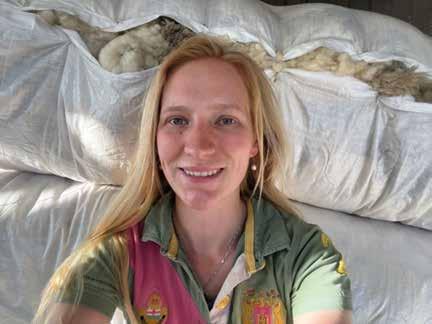
Tell us about yourself
I’m 22 and on my placement year while studying at Hartpury University in Gloucestershire. I never saw myself going to university as I wasn’t academic at school but once I found my passion within farming I have never looked back. I’ve truly loved learning everything and anything I can about both livestock and arable systems.
What's your interest in the sheep industry
I have been involved in the sheep industry
Faster finishing generated an additional £19 per lamb, concluded the study.
feed efficiency.
The higher financial return from feeding Celmanax was achieved by a combination of fewer days on farm and the lambs earning a higher price by hitting the market early, said Dr Bond.
“Lamb prices are strong throughout June and then start to decline as you get into July and August.
“This is because the majority of lambs are finishing in the July-August period, flooding the market and driving down prices.”
What do you do in your spare time?
Does anyone who works with sheep know what spare time is? If I’m not working or at university, I’m a really avid baker. I started making sourdough during lockdown and have kept it up ever since.
During the summer after I finish contract tailing and shearing, you’ll find me out bass fishing or paddle boarding on the local river with family or friends, and in the winter I often get out beating or
Why did you get involved with the British Wool training programme?
I saw last year’s participants on social media and it seemed like an amazing opportunity to improve my shearing standard, knowledge, and level with guidance from some of the best in the
passionate about sustainability and welfare, and this industry is really aligned with that.
Wool is an amazing product and being able to incorporate sheep into arable systems for several purposes can make a big difference in terms of agricultural sustainability and the welfare issues we face in the UK and globally.
What are you looking forward to most within the programme?
I’m very excited about the three courses I’m due to attend and am aiming to achieve my silver seal. I’m also looking forward to visiting the British Wool headquarters and the Bradford wool depot as I find wool processing incredibly interesting.






• Manufacturers of steel framed building, grain stores, livestock buildings general purpose building and commercial building


• All building designed in house to EN1090-2, and erected with our own employed staff

• Grain drying and handling systems supplied and installed

• All ground and civils works under taken to provide a turnkey project

All buildings constructed CE marked DIN1090
01692 535444 / 07717 478196

The government has awarded up to £30 million to cutting-edge farming projects that help to create a more resilient and sustainable agricultural sector.
They include ground-breaking genetic research projects which could reduce methane emissions in cattle by 17%; and a project to produce a reliable UK-grown protein source that can replace soya in human foods.
Funding is expected to be awarded to more than 50 projects. A further £12.5m will fund projects that boost productivity and help farmers produce food sustainably (see panel).
The funding is all part of the Farming Innovation Programme, run in partnership with UK Research & Innovation (UKRI) and delivered by Innovate UK, which is making £270m to fund farm research and development projects.
Defra secretary Therese Coffey said: “Farmers are always forward-looking, and innovation is key to driving forward a resilient, productive and sustainable agriculture sector that puts food on our tables while protecting and restoring the environment.
“Alongside our new farming schemes, these grants will help to support farmers and pave the way for a technological transformation that will help produce food sustainably for generations to come.”
It follows the Farm to Fork Summit earlier this month where the government announced a package of support for the farming sector, including new measures to ensure the sector remains at the forefront of adopting new technologies and techniques.
The government's £12.5m ‘on-farm envi ronmental resilience’ competition lets farmers apply for up to £1m for pro jects that drive the development of innovative farming methods.
With a farming focus, projects could find new ways to detect and prevent pests and dis eases; help farmers reduce their fertiliser use; boost soil resilience; and manage threats from extreme weather and flooding.
Scientists and practitioners who are re searching how gene editing and methods such as regenerative agriculture could boost pro ductivity and crop resilience are also encour aged to apply.
UK registered businesses can apply for fund ing until Wednesday 19 July 2023. For details, please visit bit.ly/farm-comp
Defra says genetic research could benefit farmers and consumers
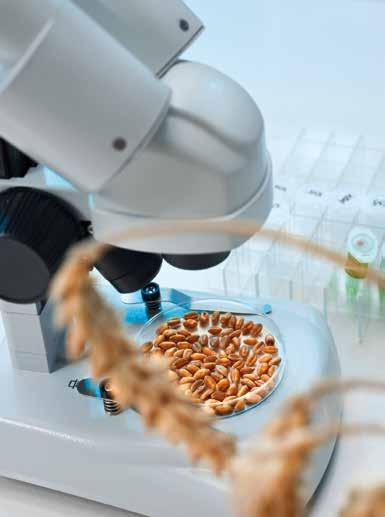
“This includes substantial investment to unlock the potential of precision genetic breeding for farmers. Meanwhile, a working group will bring together plant breeders, food manufacturers and retailers to agree an approach that enables these products to reach consumers.
Innovate UK executive director Katrina Hayter said: “The competitions once again demonstrate the sheer breadth and quality of innovation within the UK agri-food space.
“We’re proud to be able to help deliver these funding and partnership opportunities to the sector, bringing together farmers, growers, technologists and researchers in a common aim of making the UK food system more sustainable and resilient.
“Whether improving existing production or introducing novel foods and techniques, the winners have all risen to the innovation challenge and we look forward to supporting their development further.”
The government says that the grants – alongside the government’s new flexible and accessible farming schemes – will ensure that farmers remain at the heart of the rural economy and feeding the nation.
These grants will help to support farmersFunding aims to help develop innovative farming methods, says the government.
Aresidential Suffolk coastal farm that has been in the same family for more than 50 years is up for sale.

Red House Farm is situated at Harkstead on the Shotley Peninsula, near Ipswich. The five-bedroom farmhouse, buldings and land are being sold through farm agency team at Savills with a guide price of £5m.

The property comprises some 260 acres (105 hectares) of light, irrigated land occupied by a local farmer under a Farm Business Tenancy (FBT) until 30 September 2026. It includes commercially let farm buildings
which generate more than £20,000 annually, says agent William Hargreaves.

“Sandwiched between the River Stour to the south and River Orwell to the north, Red House Farm is an exemplary residential farm that has been a treasured family home for more than 50 years.
"Very rarely does such a fabulous opportunity arise in such a coveted location. Offering amenity value as well as commercial opportunity, Red House Farm is sure to appeal to a wide range of buyers.
'Fabulous opportunity'
Mr Hargreaves says the property would suit anyone who is perhaps thinking of a change of lifestyle – yet still wants the ability to generate a little extra income through various rentals and farming agreements."
Commenting on the farmland and commercial opportunities, he adds: “Located opposite the farmhouse are a range of modern and traditional farm buildings, most
of which are let on commercial terms to a range of tenants. The accompanying farmland meanwhile is ideal for growing vegetable crops with cereals – most recently cropped with potatoes, parsley, sugar beet, winter wheat and barley."
About 40% of the land is classified as being Grade 1 and 40 per cent Grade 2, with the balance towards the western boundaries being Grade 3, says Mr Hargreaves.
The five-bedroom unlisted Georgian farmhouse has an outdoor swimming pool, summer house, tennis court and vegetable garden. Features of note include elegant timber sash windows throughout and well-proportioned accommodation across three floors.
The rooms at the front of the property date from the Georgian era and include open fireplaces and views across the garden, while to the rear is a modern kitchen with dining area and snug.
Professional standards body BASIS has appointed Andrew Lazenby as its new chief executive to grow and develop the charity in new and existing areas.
Mr Lazenby is a former chief executive of the Royal Agricultural Society of England and Innovation for Agriculture (IFA). He has a history of delivering growth for organisations, including at times of change.
BASIS offers a range of recognised qualifications for people in the plant protection, plant nutrition and related sectors. Its annual inspection scheme for more than 800 UK pesti-
cide stores aims to protect people and the environment from agrochemicals.
Mr Lazenby said: “We’re seeing a switch to regenerative agricultural practices and – with ELMs appearing over the horizon – there’s a huge opportunity for what BASIS does and what it can, and will, offer.”s.
Membersbip
The role includes working to build and sustain BASIS core membership activities while helping to consolidate and drive a range of new digital opportunities throughout the agricultural sector and further afield.
“This new role is a unique op portunity for me to help grow both the service offering and ge ographical reach of BASIS. We will be, quite quickly, bringing to market new products and reaching new areas.”
BASIS Registration chair man William Burgess said:: “We’re delighted to appoint An drew as he brings extensive ex pertise from his previous roles and his proven track record for leadership in this sector will stand us in good stead.”
“We feel Andrew can take the charity forward and help us achieve our strategic and ambi tious business goals.”













Hundreds of farmers and experts shared the latest research, advice and experience to boost their income, profits and sustainability
The seminar programme at last month's Cereals show included sessions on privately funded environmental incentives and the different ways farmers can generate an income from their natural capital.

The two-day event – including a series of talks in collaboration – was held on 13-14 June at the Thoresby Estate, Nottinghamshire. It brought together expert speakers from across the UK –and as far away as New Zealand.
“There are multiple ways to engage with markets – directly with buyers, through aggregators, or farm clusters,” said Fergus Lyon, managing partner at Easthall Farm, Hitchin, Hertfordshire.
Prof Lyon suggested using the full mix of markets – from short-term options like cover cropping to improve water quality and premium prices for nature-friendly crops, to long-term contracts for biodiversity net gain or tree planting.
“Uncertainty is holding us back in some areas – like carbon trading – but the science is getting stronger and contracts are clearer, so once we’ve shown we can be net zero ourselves we’ll have more confidence in selling carbon.”
Collaborating is a great way to access private finance and deliver landscape scale benefits, explained international speakler Roger Dalrymple,
director at Waitatapia Farming in New Zealand.
“We need to understand what effect our farm is having on the environment and produce the data to prove what we’re doing to improve, so other people can tell our story rather than trying to tell it ourselves.”
Mr Dalrymple works with 350 other farmers on the Rangiteki Rivers Catchment Collective, across 700,000ha, undertaking monthly river water testing to drive management decisions. The group has secured the equivalent of £1.2m to improve water quality.
“We’re working together to get ahead of where society wants us to be – being farmer-driven is key.”
Alison Rickett agreed that working together delivers more benefits
all round compared to individual approaches. She has matched groups of farmers with large investors to deliver environmental benefits through Landscape Enterprise Networks (LENS).
The east of England cluster is expected to generate £4m in 2023 across more than 100,000ha, and the Cumbria network delivered six times the benefits that could have been achieved individually. “Collaboration is the only way forward to deliver LENS.”
Farmers also came together to learn from each other at the popular new AgAnalyst Academy focusing on making precision farming pay, the NAAC Drainage Hub, and the new Cereals Stories stage.
Charity fundraiser Farming celebrities included The Wurzels, fundraising for the Multiple System Atrophy Trust (MSAT). In total, the exhibition was 30% larger and registered attendance was up 7% on 2022, raising £30,000 for the MSAT, plus the charity raffle.
Other sessions explored topics like net zero and climate change, soil health, regenerative farming and publicly funded environment incentives. The final session of the two-day event brought together seven innovators for presentations on technology.
This featured talks on the next generation of autonomous drones, robots, and methane tractors, as well as new research into pollinator monitoring, gene editing and sugar signalling to boost wheat yields.
“Science will be a massive player in how we get to net zero,” said Robert Smith, from Russell Smith Farms, Hertfordshire, who explained the measures he has taken to ensure his business remains sustainable in a changing climate.
Farm management app Fieldmargin has expanded its feature list by incorporating a pesticide checking database so users can double-check applications meet regulations.
“We’ve made this an easy-to-use new feature that should make a lot of difference – not only to the average time-poor grower but also improve communication and interaction between farmers and advisers,” says Fieldmargin's Camilla Hayselden-Ashby.
“It puts tools previously only available to the biggest farms and agronomy companies within affordable reach of everyday growers. When you’re having to juggle weather windows, crop-walking, agronomist recommendations and paperwork, there’s always the risk of error.
“At worst, it could lead to costly crop damage or a fine, but even a relatively minor label change can result in loss of certification," says Ms Hayselden-Ashby.
"It’s easy to overlook a label change, especially if chemicals are carried over from a previous season.”
The app integrates multiple data sources. For Pesticide Check, it interfaces with data from the Lexagri Homologa database, the world’s largest crop protection product database with morethan 33 million entries. In the UK, this is supplemented by data from Fera.
Any crop protection recommendation –whether made by an agronomist or a BASIS-qualified grower – must consider factors such as the crop, the target pest or disease, the growth stage and the application history.
Being farmerdriven is key








Measures announced include:
A commitment to consult on making it easier for farmers to convert redundant agricultural buildings into new hous es by cutting red tape. Planning rules could be changed to provide a more gen erous threshold delivered through a more streamlined planning process.
A network of ‘rural housing enablers’ to act as brokers between developers and communities. Backed by £2.5m of fund ing, they will identify sites with local support for development and in keeping with the local area.
Cath CrowtherRecent weeks have given me the opportunity to meet many politicians at the region's summer shows – discussing the big issues affecting farmers and highlighting the challenges and opportunities of the latest agricultural policies.
I've discussed the importance of supporting profitable and sustainable farming, raised the need for a planning system designed for rural communities, and emphasised the role our members have in providing homes and jobs in the region.
These topics have long been among the key points of the CLA’s Rural Powerhouse campaign. And it is encouraging to see the government recently announce a wide-ranging package of measures to help unleash the potential of the rural economy.
The report – Unleashing Rural Opportunity – sets out government plans to boost rural communities by improving planning, housing, digital connectivity, transport, jobs and tackling rural crime.
• A new £7m fund to test new ways to bring together satellite, wireless and fixed line internet connectivity to sup port farmers and tourism business access fast and reliable connectivity in remote areas.
• Legislation by the summer to increase fly-tipping and litter penalties and con sult stakeholders on ringfencing the use of these fines to fund further action on fly-tipping.

The report acknowledges that rural areas contribute 15% to England’s economy –more than £250bn of national Gross Domestic Product (GDP). But our CLA Rural Powerhouse campaign argues that the rural economy can contribute even more.
The rural economy is 19% less productive than the national average. With the right government support, closing this gap could add £43bn to the national GDP. The CLA devised and championed a series of practical recommendations that would deliver:
• A fully connected countryside
• A planning system designed for rural communities
• Profitable and sustainable farming
• Investment in skills and innovation
• A simpler tax regime
The CLA has constantly pushed the government for an economic blueprint to boost prosperity and productivity.
The government is finally listening to business owners who are determined to help grow the economy, create jobs and strengthen our communities. It must now act with urgency to deliver these promises and match the ambition of rural businesses at every turn.
Cath Crowther is eastern region director for the Country Land and Business Association.For details, visit www.cla.org.uk


Aring-fenced block comprising 307.14 acres of productive Grade 2 arable land is for sale near Saffron Walden, Essex.
Situated either side of New House Lane, Ashdon, the land is in a rotation of cereals and sugar beet. Land drainage has been installed where necessary, and a water storage tank is connected to an underground water supply.
The sale is on behalf of a local farmer looking to consolidate his land ownership. Soil type is Hanslope and there is road access to many of the parcels. It is currently in mid-tier Countryside Stewardship and is offered freehold with vacant possession.
The land has opportunities for fur-
ther environmental enhancement, with a combination of small farm ponds, woodland spinneys and mature hedgerows. A small area of woodland is registered as an Essex county wild life site and ancient woodland.
Cheffins joint managing director Simon Gooderham said: “The envi ronmental credentials of the block will also make it attractive for those looking to make the most of environ mentally led grant funding options, or even carbon offsetting on a larg er scale.”
The land has a guide price of £3.1 mil lion. The local market has been charac terised by a severe lack of farmland re cently, with average prices now reaching circa £10,500 to £11,000 per acre.
The government must deliver for the rural economy, saysThe land is currently in a rotation of cereals and sugar beet




Anew online skills and learning service is being made available to grow ers and livestock producers who want to further their careers.
The Institute for Agriculture and Horticulture (TIAH) has opened up free access to the test version of the online platform ahead of its upcoming launch to farmers and other industry mem bers later this year.

Designed to support sector workers in fulfilling their potential, TIAH’s service will connect users with training and learning opportunities tailored to their individual sector, role, and skill level.
Easy to navigate, the online service will locate the best development opportunities for individuals at every stage in their career, helping them review their skills, plot their training journeys, and record achievements along the way.
TIAH is inviting everyone working in farming and growing to road test the beta version of the service for free in return for user feedback. This will allow TIAH to add improvements and complete the next stage of development of the service.
The institute said it hoped as many people as possible would take up the opportunity to fasttrack their professional development while helping the organisation deliver the best possible service to future users.
The online service also offers a range of information about careers in farming and growing to


would like to.
NFU deputy president and TIAH board member Tom Bradshaw said: “What we have set out to do – deliver a truly bespoke service tailored to sector, training, and skill levels – has never been done before, so there is a lot to do.
“While we have made great strides towards achieving our goals, we need the input from end users to ensure we are offering the best possible service. That’s why we have opened up the beta version for all.
“Not only will testers benefit from free access and the opportunity to kick start or progress with their training, development, and careers, but their feedback will also allow us to fine tune the service for future users.
“Our ambition is to not only help those of us who work in the sector – we also want to support the industry as a whole while promoting agriculture as a progressive, professional, and exciting career choice – I urge people to join us in achieving this goal.”
TIAH chief executive Janet
TIAH is the industry’s professional body, encouraging people working in UK agriculture to improve their skills with the help of an online training and career development service.
It aims to embed a culture of lifelong learning and continued professional development, foster a greater uptake of training and promote agriculture as a progressive, professional and exciting career choice. For details, visit tiah.org.
The current government consultation on proposals to make it easier to transform farm buildings into farm shops will be welcome news for some rural businesses.
But is retail necessarily a good move for farmers looking to diversify? As ever, it depends on your circumstances. Knowing your market and having the right skills are essential in what is a highly competitive – and potentially investment-heavy – sector.
Here are five key points to consider before opening up shop:
1. There’s no doubt that farm shops are popular with customers (and TV audiences), but how many outlets can one area support, especially if they are offering a very similar proposition? If it becomes easier to do, is there a risk of saturation?
Swadling said the goal was to make it easier for farmers and growers to keep on top of their learning and career development in what was a full-on busy profession.
“By signing up to the beta service, you will receive personalised learning and development recommendations and remind-
“Essentially, we’re here to take away the worry and give you the power to forge ahead with your career while not detracting from the day job.”
To access the beta online service, visit https://beta.tiah.org/
MPs have launched an inquiry into the impact of the government's post-Brexit trade policy on farmers, food processors, retailers and consumers.
Since leaving the EU, the government has signed Free Trade Agreements with Australia and New Zealand. It is also in talks with other countries including Canada, India and the Comprehensive and Progressive Agreement for Trans-Pacific Partnership.
MPs on the House of Commons environment, food and rural affairs committee said they wanted to assess the strategic and economic coherence of the government’s approach to international trade, which has been described as disastrous by the NFU.

Committee chairman Robert Goodwill said the inquiry would weigh the positive and negative impacts of agreements made so far – and in the future. It would also explore the role trade policy should play in food standards and animal welfare.
The inquiry will investigate the cumulative impact of various trade deals on the sector and what support is available to farmers where lower import taxes, or tariffs, apply on food imports. The deadline for written submissions is midnight on 28 July 2023. For further details, visit www.bit.ly/farmdeal
2. Location of farm or estate. Delve as deeply as you can into your potential market (who are you targeting/where do your customers live/how far are they likely to travel/where else could they shop?). Research your competitors, pricing, and retail in general to understand what success looks like and how to make your offering stand out.
3. Realistically, how much time can you dedicate to the venture on top of your other farming commitments? Will you be managing the business on a day-to-day basis, or will you need to employ someone? A successful shop delivers great produce, great customer service and a great overall experience, all of which require focus and the right people.
4. What about product lines? Locally-produced, seasonal fare is likely to be the aim and indeed may be your intended USP – but supplying everything from your own farm, or from neighbouring enterprises, may prove difficult. Supply will need careful thought to avoid shortages and disappointed customers.
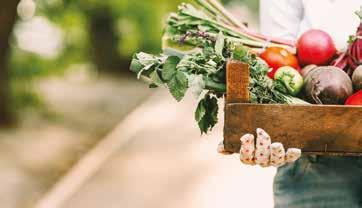
5. Think about branding and marketing. Again, do you have the necessary expertise within the existing business, or will you need external support, especially in areas like social media?
Done well, a farm shop can be, if not a day out, then a destination and a chance to connect and engage with the community. But even if the planning system does eventually become easier to navigate, setting up shop will still come with its fair share of challenges.
Matt Riddington Food & Farming Cambridge 07811 591630
matt.riddington@savills.comsavills.co.uk

ing number of food businesses harnessing the regions crops and expertise to create new protein sources and plant-based foods which are good for the planet and for our health.
Novo Farina, for example, processes locally grown yellow peas to create a gluten-free, protein rich and high fibre flour, texturised plant protein, crumbs and gluten-free snacks as alternatives to meat and wheat-based ingredients.
The government recognises this potential – saying that Norfolk and Suffolk has a ‘High Potential Opportunity’ in plant science for nutrition. This status aims to get the region onto the national and international stage.
The two counties are being promoted to a global network with the aim of attracting investment. The High Potential Opportunity is important because it’s not just about producing food, it’s about producing healthy nutritious food.
There are many initiatives to drive innovation in food production in the region and to support the growth of many SME food and drink producers. The Food Enterprise Park is a 100-acred development site just outside Norwich
It is home to the Broadland Food Innova-
tion Centre, a new space which consists of 13 food-grade units, sensory and test kitchens and meeting spaces. It aims to help innovative projects become robust and enjoy sustainable success.
The centre is backed by a cluster of business leaders. Led by the University of East Anglia, they include the Plant-Based Protein Innovation Platform which is helping to expand plant-based protein production in East of England.
Open to all organisations involved in the supply chain, the platform aims to ensure collaboration and commitment across the sector and to explore the trends, innovation and opportunities, funding and investment, market viability and nutrition.
The challenge for farmers and food producers – as well as retailers – is to help people eat more healthily. By working together, collaborating with the science and research expertise we have in the region, we can start to make a difference.
Clarke Willis FRAgS is director of the Norfolk Food Enterprise Park, which is developing major processing and support facilities for the agri-food supply chain in the eastern region. He was awarded an MBE in 2016 for Services to Agriculture.

Norfolk and Suffolk produce 11% of the UK’s agricultural output – including 17% of its fruit and vegetables. Yet most of what is produced here is processed outside the re gion. At the same time, most pulses and peabased foods are grown in China and Canada.

We need to reassess the supply chain to keep processing in the region and to connect what farmers are growing to their end markets. Part of this involves bringing more business es here and helping companies in the region to grow
Our region has some of the best brains when it comes to plant science, food nu trition and health at world-leading organ isations such as the John Innes Centre, the Quadram Institute, and the Sainsbury Lab oratory – and the University of East Anglia.
These organisations are working handin-hand with the food industry to develop innovative products. They include Fischer Farms which is establishing the world's larg est vertical farm with 25,000 square metres of stacked growing space on the outskirts of Norwich.
There are also innovative spin-out com panies in alternative proteins and a grow-
See us at Agri Expo -March 7th
•INDUSTRIAL, AGRICULTURAL OR COMMERCIAL TERNAL OR EXTERNAL

•STEEL FIXING
USH,
AND COSTING
•SILO BASES







PRONS &SHED FLOORS









•ANAEROBIC DIGESTION




























TANK BASES
•GRAIN, POTATO& MACHINERYSTORES

•PATHS, PATIOS AND DRIVEWAYS
•GROUNDWORKS & PREPARATION








JOIN US AT BATH & WEST SHOWGROUND
21-22 SEPTEMBER 2023
BE A PART OF THE SHOW
SCAN THE QR-CODE TO FIND OUT MORE ABOUT EXHIBITING
VISITOR TICKETS NOW AVAILABLE
SCAN THE QR-CODE TO BOOK
Asix-point farm safety plan has been launched in a bid to avert a repeat of last summer's devastating season of field fires.
Rural insurer NFU Mutual has joined forces with the NFU and Thames Valley Police to issue fire prevention advice. It comes after record-breaking temperatures and lack of rain turned the countryside into a tinderbox for combines, balers and standing crops.
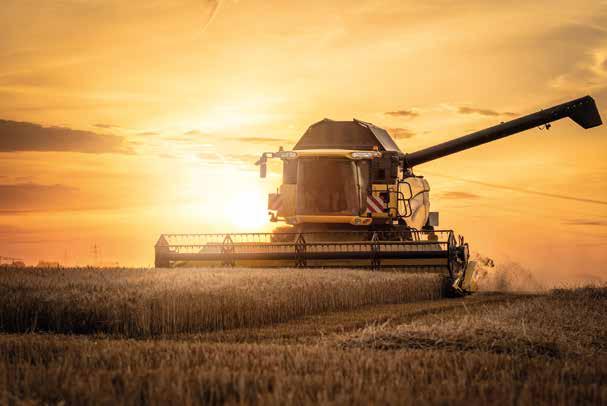
Almost £4m of damage was caused by farm fires last year in the Thames Valley area alone – including Berkshire, Buckinghamshire and Oxfordshire. Other regions were similarly affected, including East Anglia.
Across the Thames Valley area, fire prevention advice and news about the onset of local high-risk weather conditions are being shared by the fire service and the NFU’s text alert network and other social media platforms.
NFU Mutual rural affairs specialist Hannah Binns said: “Farm fires put the lives of people and animals at risk and lead to huge financial losses, destroyed food and damage to the environment.
“We recommend that farmers increase regular cleaning stops and consider a range of additional fire prevention measures including combine fire suppression systems to reduce fire risks in future hot summers.”
Working together would share expertise and quickly alert farmers to extreme weather conditions, said Ms Binns. This would help to protect farm machinery and encourage farmers to take actions to mitigate the risk of fire.
NFU advice is to keep farm vehicles maintained at all times. This includes combine harvesters which should be cleared out regularly during harvest. It’s also important to keep a serviced fire extinguisher to hand.
Having an emergency plan and staff trained on what to do is also important. This should include instructions
on accessing water supplies, with a water-filled bowser and tractor with plough on hand to create a fire break if needed.
Steve Leonard, group manager for wildfire in the Thames Valley area, said: “Last year saw an increase in fires across the Thames Valley and the UK. Thames Valley Fire and Rescue Services are proud to work with
the farming community to try and reduce incidents of agricultural fires and loss of crop and equipment.
“Even though we had an unprecedented rise in temperatures last year and climate change predictions will see this issue increase in the future, we hope the advice given with NFU Mutual and the NFU will help protect farmers’ livelihoods.”

REGULAR MAINTENANCE
Ensure equipment is clean and maintained before every harvest activity. Regular equipment blowdowns and lubrication schedules can help avoid fires.
HELP THE FIRE SERVICE
Provide the fire and rescue service control centre with what3words from the entrance of your farm and wait for the first appliance.
KNOW YOUR WATER SUPPLY
Ensure any available water on your farm is accessible to fire and rescue crews – including the nearest fire hydrant if available
HAVE A CONTINGENCY PLAN
Use cultivators to put in fire breaks where safe to do so. Have water bowsers on hand and available to extinguish spot fires.
STORE SAFE
Where possible, avoid storing bales near main roads to deter would-be trespassers and arsonists. Store pesticides and fertilisers securely.
CHECK CONDITIONS
Consult the Fire Severity Index before planning harvesting activities. This will help you avoid the most extreme weather zones.
We recommend regular cleaning stops
Aspate of farm thefts has triggered reminders to increase security in farmyards and fields as criminal gangs target GPS systems during the busy summer months.
The cost of GPS theft has gone up 30% in the first quarter of 2023, com pared to the same period last year. Re cent weeks have seen further thefts of GPS equipment, according to the lat est figures from NFU Mutual.
Bob Henderson leads the agricul tural engineering field team at the ru ral insurer. He warned: “It is extreme ly concerning that thieves are taking advantage of increased spring activi ty to identify targets.
“As well as stealing vital equipment, criminals are leaving a trail of damage as they smash glass to gain access and crudely cut wires. Not only is this cost ly, but the theft of GPS kits can hin der farming operations as well as place additional pressures on the business.
“We’re urging all farmers to be on their guard and review and update their security, such as removing GPS equipment when not in use and stor ing it away from the machines. It is also worth taking pictures of the kit and recording any serial numbers.”
DC Chris Piggott, from the National Construction and Agri Thefts Team (NCATT), added: “Intelligence shows offenders are willing to travel the length and breadth of the country to steal GPS kits and immediately export them out of the country.
“There is nowhere that they will not go, and these criminals have been targeting agricultural machinery dealerships as well as farms. It is incredibly important people remove GPS equipment from their machines and store it elsewhere.
“It may seem impractical, but GPS kits are hard to replace and if stolen,
will severely impact a farm’s ability to carry out vital fieldwork.
“I’d also encourage anyone to overtly mark them so that they are undesir-
Activate PIN security on GPS kit with your own unique number if available
If your system is not pin enabled, mark your postcode to deter thieves and trace your property back to you
Keep tractors and combines with GPS fitted stored out of sight when possible

Remove GPS kit when possible from tractors and other machinery and store it securely when not in use
Record serial numbers and photograph your kit Check serial numbers of second-hand kit offered for sale
Farmers battling a rising tide of rural crime amid the cost-of-living crisis are being urged to take extra steps to protect rural property against thieves.
Rural theft during 2022 is estimated to have cost £40.5m – with thieves targeting workshop equipment, all-terrain vehicles and livestock, as well as GPS systems. As the cost of living continues to take its toll on jobs and livelihoods, the theft risk is expected to rise.
Fuel in particular is becoming an increasing target, given that pump prices have risen and the value of red diesel has soared.
Isolated farm buildings and remote farmhouses are especially at risk. Yet research by the farm insurance comparison website Quotezone.co.uk suggest less than half of farmers keep machinery and vehicles locked away.
Based on a sample of more than 6,000 farm vehicle insurance policies, the research shows that nearly 20% of farmers keep garages or barns unlocked, despite their often isolated location, with 15% of vehicles left out on unsecure driveways.
Nationwide farm vehicle data compiled throughout 2022 shows the average value of a farm vehicle in 2022 was £13,250 – making them attractive to thieves.
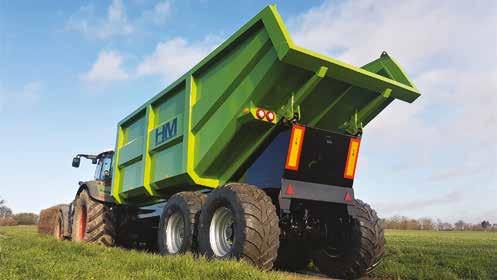

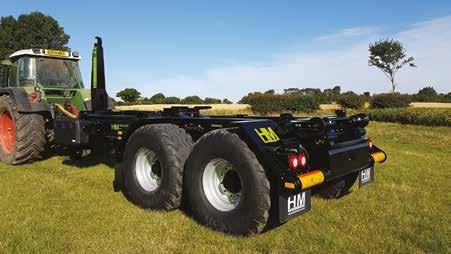

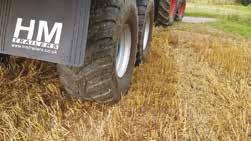







Spiralling production costs are affecting farmers’ mental health –prompting reminders for growers and livestock producers to take care of themselves.
Some 68% of farmers responding to an NFU survey said soaring input costs – including the cost of energy, fuel and fertiliser – had affected their mental wellbeing. Although some costs have eased, they still remain stubbornly high.

At the same time, 61% of farmers feeel unfairness in the supply chain is negatively impacting their mental health. Almost 50% say rural crime is taking its toll – as evidenced by the rising number of tractor GPS thefts seen in recent months.
The NFU published the data ahead of a
parliamentary event to “kickstart the conversation” about the mental health of the nation’s food producers. The global turmoil of the past 18 months had contributed to the challenges faced by farmers, it said.
Culture change
During the event, MPs had the opportunity to speak to and learn from farming charities and campaigners, helping farmers out in the field day-to-day, and farmers with their own mental health experiences.
NFU vice-president David Exwood said: “Working in the farming industry is one of the most rewarding jobs in the world. But as has been shown by our distressing survey results, the pressures are incredibly challenging too.
“Our survey pinpoints some of the root causes affecting rural mental health – economic and political uncertainty – and we are calling on government to continue taking steps to address these issues to reduce the stress farmers are facing."
This is backed up by a recent report from MPs on the House of Commons environmental select committee which called for greater joined-up rural mental health planning and action from government, and we agree with these calls.
“While we are starting to see a culture change within our sector, where talking about mental health is becoming more and more accepted, there are still too many farmers and growers simply ignoring the signs and struggling on in silence.”
Farmers are being encouraged to implement a vehicle movement plan to ensure employees stay safe during the busy harvest period.
Getting harvested crops from field to store efficiently is all about good logistics, says Gulliver Hedley, health and safety manager for Strutt & Parker. But there are significant risk where people and vehicles circulate in close proximity.
Growers should review their routes from field to farm – and the farmyard layout – and look to introduce one-way systems, crossing points and rules for reversing where possible, suggests Mr Hedley.
They should also be clear about how staff should be communicating, check any necessary signage and the availability of personal protective equipment – both for themselves, regular employees and harvest casual staff.
“Harvest is a time of the year where there are lots of vehicle movements, which according to the Health and Safety Executive has been the number one cause of deaths and serious injuries on British farms over the past five years.
“It can also involve working in dusty conditions, or at height, which again poses a risk to
workers if appropriate equipment or protective equipment is not used. Thinking through the risks well ahead of time can help make this year’s harvest safer for everyone involved.”
Grain stores can be dangerous places given they can involve moving vehicles, moving parts, working at height, be confined spaces, as well as being dusty and have limited light, adds Mr Hedley.
“Make sure you have rules in place should anyone need to enter a grain store. Training and communication with all those involved is vital. Make sure there is a process of induction for new or temporary staff that clearly explains everything needed.”
Two thirds of farmers say spiralling costs are affecting their wellbeing.
Artificial intelligence – or AI as it is known – is not something I know much about. And being described as of average intelligence by my school teachers probably disqualifies me from commenting on the fact that the machines are coming.

But if you follow Elon Musk, who warns about the dangers of AI, then maybe it is worth sitting up and taking notice. The multi-billionnaire wants a six-month timeout on the latest AI systems. We need time to breath – even if the machines don't.
There is nothing new in the idea that technology has arrived with the prospect of doing things quicker and better – and putting people out of jobs. Just hark back to the Swing Riots which accompanied the arrival of the threshing machine in the 19th century.
People rioted – but the idea that threshing machines caused mass unemployment during the Victorian age is ill-founded. It wasn't so much technology that saw people leave the land as the lure of better paid jobs in newly industrialised towns and cities.
Technology has generally been good for
farming. Who wants to hand hoe sugar beet, for example? Or hand milk cows? These days, AI has already been applied to aid the early detection of pests and diseases – in plants as well as animals.
Then there are images of crops captured by drones and analysed by computer. We have AI-controlled livestock feeding regimes. Driverless tractors haven't yet been introduced on a large scale yet – but that too could be just around the corner.
But there are real questions to ask. What is a major doubt is who will benefit from the increase in productivity? What happens if all the technology gains are in the hands of a few tech giants, rather than growers and livestock producers?
Will AI destroy more jobs than it creates? Will employment levels fall? The jury is out once again. Numerous surveys suggest millions of jobs could be at risk. But nobody knows for certain.
What we do know is that technology moves at a fast pace. But machines are expensive and farm workers are by comparison relatively cheap. And even if robots don't fall ill or suffer from hangovers, they can go terribly wrong. And expensively so.
Could robots really replace farm staff? True, they have already replaced human milkers on many farms. But can they calve a cow? Or lamb a ewe? Or replace a broken fuel pipe at 10.30pm at night?
Or blow down dust and straw from a com-
bine engine at the height of harvest? Or weld up a broken sieve? Or push up grain? Or remove a piece of bog oak from a jammed threshing drum?
All these jobs involve so-called basic skills that us workers have developed since the Stone Age. A computer might be able to beat a Grand Master chess champion – but supposedly easier tasks are often better done by mere humans.
Predictions that the average worker would only be required to work 15-20 hours a week have proved wide of the mark. And it is white collar workers rather than blue collar workers whose jobs are most at risk from AI.
Politicians like to embrace the possibilities promised by AI. Listen to technology secretary Michelle Donelan, who says she wants AI to make the UK a smarter, healthier and happier place to live and work.
This is all fine if the technology works. But lose the signal and most of the younger generation cannot keep straight or figure out how to manually drive a beet drill over the top of a hill without any markers.
It's only then you begin to understand how we already depend on AI in our everyday lives. No doubt the technology is here to stay. But will it create a farm workforce who can mould together and make the farm a happy place to be?
I very much doubt it – but I will let you know when I have worked out how to get the broadband signal back.

The experts are wrong: there is no way robots and computers can make farmers redundant, says Fen Tiger .
Who will really benefit from artificial intelligence?
Ultra comfortable, re-usable & last for years. Acoustic filter allows you to still hear everything, whilst protecting you from harmful noise levels. Available with CE approval. Earpieces are custom moulded from soft silicone, and offer the highest degree of comfort whilst providing an effective acoustic barrier. Choice of colours available. Ideal for shooting - maximum protection without imparing hearing.
Autotel Ltd - 01508 528837 • www.autotelradio.co.uk

Wattisfield, Diss, Norfolk
Native and ornamental trees, hedging and shrubs
Tel: 01359 251678
sales@sandylanenursery co uk
Suppliers
www sandylanenursery co uk WANTED


Don’t run short of fuel this Winter!
Single and twin compartments, with cradles Bunded Tanks
Buy or hire a storage tank from Kings



From 54,500 litres to 27,250 litres (12,000 - 6,000 Single and twin compartments, with cradles Bunded Tanks

4500L – 38,600L Bunded Fuel Tanks

From 27,000 litres to 10,000 litres (6,000 - 2,000 With cabinet, guage and alarm
c/w cabinet, gauge and alarm
2730L – 54,500L horiz/cyl Water Tanks single or twin comp. with cradles
With cabinet, guage and alarm fuel, Call today for details

All suitable for fuel, water and effluent Call today for details

01405
Crow Tree Farm, Crow Tree Bank, Thorne Levels, Doncaster, South Yorkshire, DN8 5TF info@webstersinsulation.com www.webstersinsulation.com

